Home — Essay Samples — Nursing & Health — Alternative Medicine — Positive Effects of Marijuana’s Impact on Health: Benefits

Positive Effects of Marijuana's Impact on Health: Benefits
- Categories: Alternative Medicine Marijuana Medical Marijuana
About this sample

Words: 1587 |
Published: Feb 12, 2019
Words: 1587 | Pages: 3 | 8 min read
Table of contents
Introduction, positive effects of marijuana on our health, negative effects of marijuanas on our health.
- Marijuana can be smoked .and it’s been prepared with a white plain square paper and the marijuana leaf is been put inside the paper and you use the paper wrap the leaf and tie on one and the other end will be acting like filter in cigarette.
- While some people put the marijuana leaf and mix marijuana in food (edibles), such as brownies, cookies, or candy, or brew it as a tea. A newly popular method of use is smoking or eating different forms of THC-rich resins in most cases it’s been put inside milk or juice.
- Marijuana can also be chewed like meat and some other solid materials that requires chewing. positive effect of marijuana to our health Marijuana have effect on two different occasions. We have the long and short term.in everything we do, we always have merit of that thing and demerit of that same thing.
- Decline in IQ (up to 8 points if prolonged use started in adolescent age)
- Poor school performance and higher chance of dropping out
- Impaired thinking and ability to learn and perform complex tasks
- Lower life satisfaction
- Addiction (about 9% of adults and 17% of people who started smoking as teens)
- Potential development of opiate abuse
- Relationship problems, intimate partner violence
- Antisocial behavior including stealing money or lying
- Financial difficulties
- Increased welfare dependence
- Greater chances of being unemployed or not getting good jobs.
- sexual problems for males
- increases risk of strokes
- slow in reaction
- Loss of sense of personal identity
- increase heart attacks
- short term memory problems.
Short Term Positive Effect of Marijuana in our Health
You may also be interested PSA Citation Generator
Long Term Positive Effect of Marijuana in our Health
How does marijuana affect the brain.
- altered senses (for example, seeing brighter colors)
- altered sense of time
- changes in mood
- impaired body movement difficulty with thinking and problem-solving
- impaired memory
- hallucinations (when taken in high doses)
- delusions (when taken in high doses)
- psychosis (when taken in high doses).
Cannabis plant,person smokes marijuana,chemical THC,oxidative damage,chronic stress,harmful free radicals,Cannabis sativa,Boston study,Cannabis indica plant,minutes of smoking,Marijuana,Oxidative stress,dried leaves,distress call,cannabis vapor,DNA damage,free radicals
Works Cited
- Belendiuk, K. A., Baldini, L. L., Bonn-Miller, M. O. (2015). Narrative review of the safety and efficacy of marijuana for the treatment of commonly state-approved medical and psychiatric disorders. Addiction Science & Clinical Practice, 10(1), 10.
- Blessing, E. M., Steenkamp, M. M., Manzanares, J., & Marmar, C. R. (2015). Cannabidiol as a potential treatment for anxiety disorders. Neurotherapeutics, 12(4), 825-836.
- Davis, M. P. (2016). Cannabinoids for symptom management and cancer therapy: the evidence. Journal of the National Comprehensive Cancer Network, 14(7), 915-922.
- Huestis, M. A. (2007). Human cannabinoid pharmacokinetics. Chemistry & biodiversity, 4(8), 1770-1804.
- Juknat, A., & Mechoulam, R. (2012). Cannabinoids and inflammatory bowel diseases. Inflammatory bowel diseases, 18(10), 2064-2068.
- Loflin, M., Earleywine, M., & De Leo, J. (2014). Enjoyment and use of marijuana in different ways: Smoking, eating, and vaporizing. Journal of psychoactive drugs, 46(3), 221-227.
- National Institute on Drug Abuse. (2021). Marijuana. https://www.drugabuse.gov/drug-topics/marijuana
- National Academies of Sciences, Engineering, and Medicine. (2017). The health effects of cannabis and cannabinoids: the current state of evidence and recommendations for research. National Academies Press.
- Pazos, M. R., Mohammed, N., Lafuente, H., Santos, M., Martínez-Pinilla, E., & Moreno, E. (2013). Mechanisms of cannabidiol neuroprotection in hypoxic-ischemic newborn pigs: role of 5HT(1A) and CB2 receptors. Neuropharmacology, 71, 282-291.
- Volkow, N. D., Baler, R. D., Compton, W. M., & Weiss, S. R. B. (2014). Adverse health effects of marijuana use. New England Journal of Medicine, 370(23), 2219-2227.

Cite this Essay
Let us write you an essay from scratch
- 450+ experts on 30 subjects ready to help
- Custom essay delivered in as few as 3 hours
Get high-quality help

Dr. Karlyna PhD
Verified writer
- Expert in: Nursing & Health

+ 120 experts online
By clicking “Check Writers’ Offers”, you agree to our terms of service and privacy policy . We’ll occasionally send you promo and account related email
No need to pay just yet!
Remember! This is just a sample.
You can get your custom paper by one of our expert writers.
121 writers online
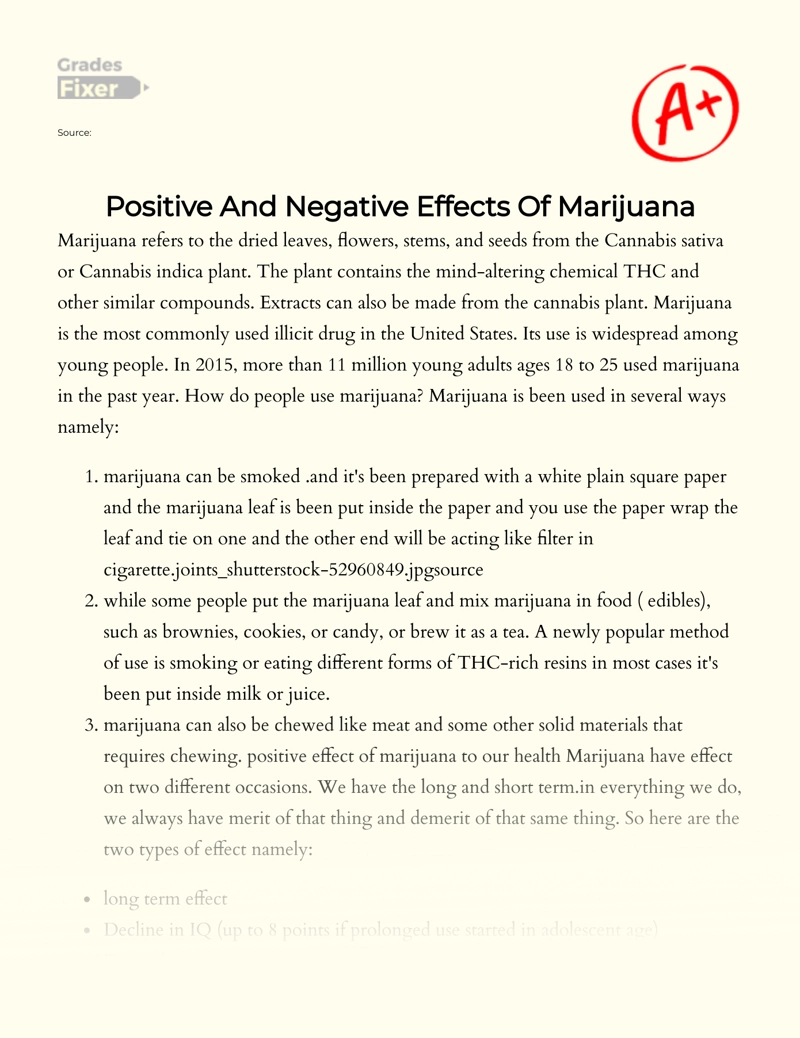
Still can’t find what you need?
Browse our vast selection of original essay samples, each expertly formatted and styled
Related Essays
Natural cures have been around for a long, long time and have been utilized to help cure an assortment of wellbeing concerns. The greater part of the cures utilized before involved chiefly of home grown cures since there were no [...]
Related Topics
By clicking “Send”, you agree to our Terms of service and Privacy statement . We will occasionally send you account related emails.
Where do you want us to send this sample?
By clicking “Continue”, you agree to our terms of service and privacy policy.
Be careful. This essay is not unique
This essay was donated by a student and is likely to have been used and submitted before
Download this Sample
Free samples may contain mistakes and not unique parts
Sorry, we could not paraphrase this essay. Our professional writers can rewrite it and get you a unique paper.
Please check your inbox.
We can write you a custom essay that will follow your exact instructions and meet the deadlines. Let's fix your grades together!
Get Your Personalized Essay in 3 Hours or Less!
We use cookies to personalyze your web-site experience. By continuing we’ll assume you board with our cookie policy .
- Instructions Followed To The Letter
- Deadlines Met At Every Stage
- Unique And Plagiarism Free
A .gov website belongs to an official government organization in the United States.
A lock ( ) or https:// means you've safely connected to the .gov website. Share sensitive information only on official, secure websites.
- About Cannabis
- Health Effects
- Cannabis FAQs
- Facts and Stats
- Journal Articles
- MMWR Articles
- Related Websites
Cannabis Health Effects
- Cannabis use may have a wide range of health effects on the body and brain.
- There are several risk factors and negative health outcomes associated with cannabis use.

How cannabis can affect your health
Cannabis is the most commonly used federally illegal drug in the United States, with an estimated 61.9 million people using it in 2022. 1 Cannabis use may have a wide range of health effects on the body and brain. 2 Click on the sections below to learn more about how cannabis use can affect your health.
Cannabis health effects
There are health risks associated with using cannabis regardless of how it is used. These include:
Cannabis Use Disorder
People who use cannabis can struggle with physical dependency and controlling their use. This is concerning as there is evidence suggesting the use of highly concentrated THC products is associated with more severe cannabis use disorder symptoms. 3 While approximately 3 in 10 persons who report cannabis have a cannabis use disorder, this figure is rising. 1 4 Some signs and symptoms of cannabis use disorder include trying but failing to quit using cannabis or giving up important activities with friends and family in favor of using cannabis. 5 The risk of developing cannabis use disorder is stronger in people who start using cannabis during youth or adolescence and who use cannabis more frequently. 6
Brain Health
Cannabis use directly affects brain function—specifically the parts of the brain responsible for memory, learning, attention, decision making, coordination, emotions, and reaction time. 7 8
Heart Health
Cannabis can make the heart beat faster and raise blood pressure immediately after use. 9 10 It could also lead to increased risk of stroke, heart disease, and other vascular diseases. 11 12 13 14 15
Cannabis, like alcohol, negatively affects several skills required for safe driving. You can choose not to drive—and remind your friends and family to do the same—after using cannabis.
- It can slow reaction time and ability to make decisions. 7 16
- Cannabis can impair coordination and distort perception. 7 16
- The use of multiple substances (such as cannabis and alcohol) at the same time can increase impairment. 17
- Some studies have shown an association between cannabis use and car crashes; however, more research is needed. 7 17
Lung Health
Smoked cannabis, regardless of how it is smoked, can harm lung tissues and cause scarring and damage to small blood vessels. 18 19
Mental Health
Cannabis use has been linked to social anxiety, depression, and schizophrenia (a type of mental illness where people might see or hear things that aren't really there), but scientists don't yet fully understand the relationships between these mental health disorders and cannabis use. 20 21
Unintentional Poisoning
Edibles, or food and drink products infused with cannabis, have some different risks than smoked cannabis, including a greater risk of poisoning. 7 Some cannabis edibles have packaging designed to mimic the appearance of well-known branded snacks and candy that appeal to children, which increases the risk for unintentional ingestion. Children who consume THC-containing products can become very sick. 22
If You Use Cannabis Products
If you use cannabis products, keep them in a locked childproof container and out of the sight and reach of children. For additional questions, you can contact your healthcare provider, your health department, your local or regional poison control center at 1-800-222-1222 , or 911 if it's an emergency.
FDA Warns About Children Accidentally Ingesting Food Products Containing THC
- Substance Abuse and Mental Health Services Administration. Key substance use and mental health indicators in the United States: Results from the 2022 National Survey on Drug Use and Health (HHS Publication No. PEP23-07-01-006, NSDUH Series H-58). Center for Behavioral Health Statistics and Quality, Substance Abuse and Mental Health Services Administration. 2023. https://www.samhsa.gov/data/sites/default/files/reports/rpt42731/2022-nsduh-nnr.pdf . Accessed on February 9, 2024.
- Rosenberg EC, Tsien RW, Whalley BJ, et al. Cannabinoids and Epilepsy. Neurotherapeutics . 2015;12(4):747-768. doi: 10.1007/s13311-015-0375-5.
- Freeman TP, Winstock AR. Examining the profile of high-potency cannabis and its association with severity of cannabis dependence. Psychol Med. 2015;45(15):3181-3189. doi: 10.1017/S0033291715001178
- Substance Abuse and Mental Health Services Administration. Key substance use and mental health indicators in the United States: Results from the 2021 National Survey on Drug Use and Health (HHS Publication No. PEP22-07-01-005, NSDUH Series H-57). Center for Behavioral Health Statistics and Quality, Substance Abuse and Mental Health Services Administration. https://www.samhsa.gov/data/report/2021-nsduh-annual-national-report . Accessed on February 9, 2024.
- American Psychiatric Association, Diagnostic and Statistical Manual of Mental Disorders. 5th ed. Arlington, VA, 2013.
- Winters KC, Lee C-YS. Likelihood of developing an alcohol and cannabis use disorder during youth: Association with recent use and age. Drug Alcohol Depend . 2008;92(1-3):239-247. doi: 10.1016/j.drugalcdep.2007.08.005.
- National Academies of Sciences, Engineering, and Medicine. The health effects of cannabis and cannabinoids: the current state of evidence and recommendations for research. Washington, DC: The National Academies Press; 2017. https://nap.nationalacademies.org/catalog/24625/the-health-effects-of-cannabis-and-cannabinoids-the-current-state . Accessed February 8, 2024.
- Batalla A, Bhattacharyya S, Yücel M, et al. Structural and functional imaging studies in chronic cannabis users: A systematic review of adolescent and adult findings. PLoS One . 2013;8(2):e55821. doi: 10.1371/journal.pone.0055821.
- Sidney S. Cardiovascular consequences of marijuana use. J Clin Pharmacol . 2002;42(S1):64S-70S. https://doi.org/10.1002/j.1552-4604.2002.tb06005.x
- Subramaniam VN, Menezes AR, DeSchutter A, et al. The cardiovascular effects of marijuana: Are the potential adverse effects worth the high? Mo Med . 2019;116(2):146-153.
- Wolff V, Armspach JP, Lauer V, et al. Cannabis-related stroke: Myth or reality? Stroke . 2013;44(2):558-563. doi: 10.1161/STROKEAHA.112.671347.
- Wolff V, Zinchenko I, Quenardelle V, et al. Characteristics and prognosis of ischemic stroke in young cannabis users compared with non-cannabis users. J Am Coll Cardiol . 2015;66(18):2052-2053. doi: 10.1016/j.jacc.2015.08.867.
- Franz CA, Frishman WH. Marijuana use and cardiovascular disease. Cardiol Rev . 2016;24(4):158-162. doi: 10.1097/CRD.0000000000000103.
- Rumalla K, Reddy AY, Mittal MK. Association of recreational marijuana use with aneurysmal subarachnoid hemorrhage. J Stroke Cerebrovasc Dis . 2016;25(2):452-460. doi: 10.1016/j.jstrokecerebrovasdis.2015.10.019.
- Rumalla K, Reddy AY, Mittal MK. Recreational marijuana use and acute ischemic stroke: A population-based analysis of hospitalized patients in the United States. J Neurol Sci . 2016;364:191-196. doi: 10.1016/j.jns.2016.01.066.
- Compton R. Marijuana-impaired driving. A report to Congress. Washington, DC: National Highway Traffics Safety Administration, 2017. https://www.nhtsa.gov/sites/nhtsa.dot.gov/files/documents/812440-marijuana-impaired-driving-report-tocongress.pdf . Accessed February 9, 2024.
- Lacey JH, Kelley-Baker T, Berning A, et al. Drug and alcohol crash risk: A case-control study (Report No. DOT HS 812 355). Washington, DC: National Highway Traffic Safety Administration; 2016.
- Tashkin DP, Simmons MS, Tseng CH. Impact of changes in regular use of marijuana and/or tobacco on chronic bronchitis. COPD . 2012;9(4):367-374. doi: 10.3109/15412555.2012.671868.
- Wang X, Derakhshandeh R, Liu J, et al. One minute of marijuana secondhand smoke exposure substantially impairs vascular endothelial function. J Am Heart Assoc . 2016;5(8):e003858. doi: 10.1161/JAHA.116.003858.
- Fattore L, Fratta W. How important are sex differences in cannabinoid action? Br J Pharmacol . 2010;160(3):544-548. doi: 10.1111/j.1476-5381.2010.00776.x.
- Volkow ND, Swanson JM, Evins AE, et al. Effects of cannabis use on human behavior, including cognition, motivation, and psychosis: A review. JAMA Psychiatry . 2016;73(3):292-297. doi: 10.1001/jamapsychiatry.2015.3278.
- Richards JR, Smith NE, Moulin AK. Unintentional cannabis ingestion in children: A systematic review. J Pediatr . 2017;190:142-152. doi: 10.1016/j.jpeds.2017.07.005.
Cannabis and Public Health
Cannabis—which can also be called marijuana —is the most commonly used federally illegal drug in the United States.
March 1, 2024
Is Marijuana Bad for Health? Here’s What We Know So Far
Marijuana’s health impacts—good and bad—are coming into focus
By Jesse Greenspan
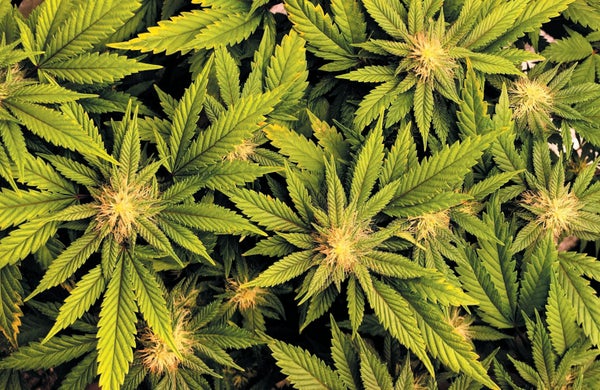
Cappi Thompson/Getty Images
With decades of legal and social opprobrium fading fast, marijuana has become an extremely popular commercial product with more than 48 million users across the U.S. Health concerns, once exaggerated, now often seem to be downplayed or overlooked. For example, pregnant patients “often tell me they had no idea there's any risk,” says University of Utah obstetrician Torri Metz, lead author of a recent paper in the Journal of the American Medical Association on cannabis and adverse pregnancy outcomes.
Fortunately, legal reforms are also gradually making it easier to study marijuana's health effects by giving U.S. scientists more access to the drug and a wider population of users to study. Although much research remains in “early stages,” the number of studies has finally been increasing, says Tiffany Sanchez, an environmental health scientist at Columbia University. As new results accumulate, they offer a long-overdue update on what science really knows about the drug.
On supporting science journalism
If you're enjoying this article, consider supporting our award-winning journalism by subscribing . By purchasing a subscription you are helping to ensure the future of impactful stories about the discoveries and ideas shaping our world today.
In addition to minor side effects that many users joke about—such as short-term memory loss—recent studies have linked marijuana to adverse health outcomes involving the lungs, heart, brain and gonads. For example, heavy marijuana consumption seems to increase the risk of clogged arteries and heart failure , and it may impact male fertility . Smoking weed likewise can lead to chronic bronchitis and other respiratory ailments (although, unlike tobacco, it hasn't been definitively tied to lung cancer). And cannabis plants hyperaccumulate metal pollutants, such as lead, which Sanchez found can enter users' bloodstreams .
Developing adolescent brains, particularly those predisposed to mental illness, may be most at risk from overconsumption. Although psychiatric effects are hotly debated , studies suggest that heavy weed use exacerbates—or may trigger— schizophrenia , psychosis and depression in youths and that it affects behavior and academic performance. “From a safety viewpoint, young people should definitely stay away from it,” says University of Ottawa psychiatrist Marco Solmi, lead author of a recent review of cannabis and health in the British Medical Journal .
24 states have legalized recreational marijuana, with 38 allowing medical use
Moreover, the drug can cross over to fetuses during pregnancy. Several studies have linked it to low birth weights , and researchers suspect it raises the likelihood of neonatal intensive care unit admissions and stillbirths . Some cannabis dispensaries have advertised their products as a cure for morning sickness, but Metz emphasizes that safer alternatives exist.
Of course, many adults use marijuana responsibly for pleasure and relaxation. Unlike with, say, opioids, there's effectively zero risk of life-threatening overdose. Plus, “people get addicted with tobacco way faster,” says Columbia University epidemiologist Silvia Martins, who studies substance use and related laws.
Cannabis, and its derivatives, also may help alleviate pain—although some researchers contend that it performs little better than a placebo . It may also decrease chemotherapy-induced nausea, calm epileptic seizures , ease the symptoms of multiple sclerosis and serve as a sleep aid .
Recent studies have hinted that the drug might slightly reduce opioid dependency rates, although this, too, is disputed . There's some evidence that weed users tend to be more empathetic , and researchers found that elderly mice get a mental boost from the drug. Still, experts caution against self-medicating: “You should ask your doctor,” Solmi says.
Some of the recent research into marijuana is more lighthearted. One study, for instance, found that, just like people, nematode worms dosed with cannabis get the munchies .
An official website of the United States government
The .gov means it’s official. Federal government websites often end in .gov or .mil. Before sharing sensitive information, make sure you’re on a federal government site.
The site is secure. The https:// ensures that you are connecting to the official website and that any information you provide is encrypted and transmitted securely.
- Publications
- Account settings
Preview improvements coming to the PMC website in October 2024. Learn More or Try it out now .
- Advanced Search
- Journal List
- HHS Author Manuscripts

Effects of Cannabis on the Adolescent Brain
Joanna jacobus.
1 VA San Diego Healthcare System, Psychology Service (116B), 3350 La Jolla Village Drive, San Diego, CA 92161, USA
2 University of California, San Diego, Department of Psychiatry, 9500 Gilman Drive (0603), La Jolla, CA 92093-0603, USA
Susan F. Tapert
This article reviews neuroimaging, neurocognitive, and preclinical findings on the effects of cannabis on the adolescent brain. Marijuana is the second most widely used intoxicant in adolescence, and teens who engage in heavy marijuana use often show disadvantages in neurocognitive performance, macrostructural and microstructural brain development, and alterations in brain functioning. It remains unclear whether such disadvantages reflect pre-existing differences that lead to increased substances use and further changes in brain architecture and behavioral outcomes. Future work should focus on prospective investigations to help disentangle dose-dependent effects from pre-existing effects, and to better understand the interactive relationships with other commonly abused substances (e.g., alcohol) to better understand the role of regular cannabis use on neurodevelopmental trajectories.
Introduction
According to the 2011 Monitoring the Future Study, marijuana remains the most commonly used illicit drug in adolescence in the United States, one of few increasing in prevalence. In fact, marijuana has been the most commonly used illicit substance for almost 40 years, and presently 23% of 12 th graders in the U.S. report using marijuana in the past month [ 1 ]. Marijuana use in adolescence could have implications for academic functioning, as well as social and occupational functioning extending into later life. Maturational brain changes, particularly myelination and synaptic pruning, are occurring throughout adolescence, well into early adulthood [ 2 ]. These remodeling processes are purportedly linked to efficient neural processing, and believed to underlie specialized cognitive processing necessary for optimal neurocognitive performance.
Cannabinoid receptors (CB1) are widely distributed throughout the brain (e.g., hippocampus, prefrontal cortex), and play a role in neurotransmitter release and concentrations across neural systems (excitatory and inhibitory). It has been suggested that these receptors increase during adolescence, have a role in genetic expression of neural development, and that alteration of the endocannabinoid system during adolescence may results in a cascade of neurochemical and neurostructural aberrations, thus leading to poorer cognitive and emotional outcomes in adulthood [ 3 , 4 ].
Disruptions in brain development related to neurotoxic effects of regular marijuana use could significantly alter neurodevelopmental trajectories by not only changing neurochemical communication and genetic expression of neural development, but causing a toxic effect on brain tissue. Such a marijuana-related effect on white matter and gray matter structures (e.g., changes in myelin, axons, and synapses) could have widespread implications for healthy brain development from childhood to young adulthood on subtle cognitive functioning and success in daily functioning. Studies exploring the neurocognitive consequences and structural and functional neuroimaging changes related to marijuana use in adolescence will be discussed, along with recommendations for future work.
Adult studies of marijuana use often find subtle decreases in performance compared to controls in cognitive domains such as attention, memory, and processing speed; such effects have been discussed as transient in the literature given limited group differences after prolonged abstinence from marijuana [ 5 , 6 ]. It is unclear if findings translate to adolescent populations. Ongoing cognitive development in the domains of memory and executive functioning, and particularly in specialized functions like cognitive control, is not only tightly associated with adolescence and neocortical tissue maturation, but is likely to have implications for school performance and engagement in risk/reward behaviors [ 7 ]. One of the earliest studies on the effects of marijuana on adolescent neurocognitive development evaluated verbal and nonverbal memory performance in cannabis-dependent adolescents (ages 14 to 16) compared to matched controls [ 8 ]. Schwartz and colleagues found that short-term memory impairment persisted after six weeks of monitored abstinence. In contrast, Teichner and colleagues (2000) found no relationship between marijuana use severity and cognitive performance among cognitively impaired and unimpaired adolescents referred for drug treatment [ 9 ]. There have been considerable additions to the literature over the last decade, yet the degree of impairment related to marijuana use in adolescence remains inconclusive. A pattern of subtle yet potentially detrimental effects in cognitive domains related to attention, learning, and memory are most often described.
A prospective study conducted in 2005 examined neurocognitive performance among 17–21 year olds with history of soft drug exposure in utero compared to prior performance at 9–12 years old. Current heavy cannabis users performed significantly worse on measures of processing speed and memory, controlling for pre-drug performance. Notably, former heavy users (reporting 3 months without regular use) had similar scores to non-marijuana using controls [ 10 ]. In regard to higher-order cognitive functioning, Lane and colleagues (2007) found adolescents (ages 14–18) with histories of heavy marijuana use performed worse on perseverative responding and flexible thinking compared to controls with limited histories of use. This same research group also found evidence of reduced motivation among marijuana users compared to controls [ 11 , 12 ]. In 2007, Harvey and colleagues found adolescent marijuana users (age 13–18; use greater than once per week) performed worse on tests of attention, learning, and memory; furthermore, poorer performance on executive functioning in this sample was related to more days of cannabis use in the past month [ 13 ].
Studies from our laboratory have largely found differences in similar domains following four weeks of monitored abstinence. Our first prospective investigation found that cumulative marijuana use over the course of eight years (teens followed from ages 13–30) was related to poorer performance on measures of attentional functioning [ 14 ]. In a subsequent cross-sectional study of adolescent marijuana users ages 16–18, we found that marijuana users demonstrated slower processing speed, poorer verbal learning and memory, and sequencing abilities [ 15 ]. In order to better understand acute changes with abstinence, we examined neurocognitive performance over 3 weeks of monitored abstinence in marijuana users ages 15–19. Between-group differences in attention, learning, and memory were identified at baseline, however while learning and memory performance reached similar levels of performance to controls after 3 weeks of abstinence, attention differences persisted [ 16 ].
Group differences in our studies generally persist despite controlling for alcohol use present in both controls and marijuana users; but to further understand differential contributions of marijuana and alcohol to neurocognitive functioning in our sample, we examined unique associations between alcohol use severity and cognitive functioning in both marijuana users as well as controls. In a recent investigation, we found that more self-reported alcohol withdrawal symptoms predicted poorer performance on learning and memory in a sample of non-marijuana using teens with histories of episodic alcohol use, despite no relationship in our marijuana users with similar and/or heavier self-reported history of alcohol use [ 17 ]. This suggests differential relationships between marijuana, alcohol, and cognitive outcomes in our sample. We have observed similar relationships in magnetic resonance imaging (MRI) studies examining structural and functional brain alterations [ 18 – 20 ], which will be discussed in greater detail below.
In recent work, Tait and colleagues looked at young adult cannabis users (ages 20–24) and found memory deficits, however cessation of cannabis use was associated with improved performance with abstinence over the course of eight years [ 21 ]. Takagi and colleagues found that cannabis users (ages 13–24) performed worse on measures of immediate and delayed verbal memory compared to community controls. In a similar study by this team of investigators, no differences between cannabis users and community controls were found on measures of executive functioning [ 22 , 23 ]. Similarly Gonzalez and colleagues (2012) found differences on immediate and delayed recall among young adult cannabis users (approximately age 20) compared to nonusing controls, however no differences were observed on measures of impulsivity. Despite no group differences on impulsivity, the authors found that worse performance on a decision making task was related to more cannabis use disorder symptoms [ 24 ]. Solowij and colleagues looked at 181 adolescents (ages 16–20) and found that cannabis users performed worse on learning and recall, and poorer performance was related to severity, frequency, and age of initiation of cannabis use [ 25 ]. A study on prospective memory evaluated undergraduates between the ages of 18 and 24 years old, while no differences in self-reported prospective memory was identified, cannabis users did recall fewer location-action combinations during the objective video-based prospective memory task [ 26 ]. A large-scale (N = 1037) longitudinal investigation from New Zealand evaluating individuals from birth to age 38 recently found a decline in intelligence quotient, particularly executive functioning and processing speed, with persistent cannabis dependence. Notably, those individuals with weekly use before age 18 demonstrated greater decline in cognitive performance [ 27 ].
Early/Late Onset of Use
Studies evaluating early- and late-onset marijuana users have provided considerable insight into the effects of cannabis use on adolescent neurodevelopment. For example, Ehrenreich and colleagues (1999) found that initiation of marijuana use prior to age 16 predicted impaired reaction time on a task of sustained attentional processing [ 28 ]. In 2003, Pope and colleagues also found that early-onset (or initiation prior to age 17) was related to poorer performance on verbal memory and fluency tasks, as well as verbal IQ [ 29 ]. Focusing on executive functioning, Fontes and colleagues (2011) examined 104 chronic cannabis users ages 18–55. All participants met criteria for DSM-IV cannabis abuse or dependence. The authors found that adolescent cannabis users reporting initiation prior to age 15 demonstrated poorer performance on tasks of sustained attention, impulse control, and executive functioning [ 30 ]. Overall, the majority of data support poorer cognitive performance on measures of attention and learning, and memory in adolescent users of cannabis, however frequency and severity of use is likely to play a role, particularly in those reporting younger age of initiation. Further, some evidence suggests that many of the subtle cognitive effects are likely to resolve after longer-term abstinence.
Structural NeuroImaging
Gray matter macrostructure.
A large body of literature has shown dynamic changes in gray matter structures that are ongoing over adolescent development (e.g., cortical volume decline after about 6 years of age). For instance, dendritic pruning and elimination of synapses likely results in cortical thinning and decreased cerebral volume (e.g., subtraction of overproduced or weaker synaptic connections) to some degree, whereas some subcortical structures such as the hippocampus and amygdala have been shown to increase with age [ 2 , 31 , 32 ]. Studies show a high density of CB1 cannabinoid receptors in neocortex, hippocampus, amygdala, hypothalamus, basal ganglia, and cerebellum [ 4 ]; therefore the degree to which cannabis use alters cortical and subcortical gray matter tissue development is being increasingly explored in the literature. While some alterations in gray matter macrostructure have been suggested, there has been inconsistent evidence of morphological changes as evaluated by structural MRI. For instance, Block and colleagues (1999) as well as DeLisi and colleagues (2006) found no differences in gray matter tissue volume between adolescent cannabis users and matched controls [ 33 , 34 ].
In 2010, adolescent cannabis abusers (ages 16–19) were found to have decreased right medial orbital prefrontal cortex volume compared to non-using counterparts; volume was also found to be positively correlated with age of initiation of marijuana use in the sample (i.e., younger age of first use associated with reduced orbital prefrontal cortex volume) [ 35 ]. A second study published in 2010 found that while age was associated with changes in brain morphometry among non-users, there was no relationship between age and cortical gyrification in adolescent and young adult cannabis users. Cannabis users did show decreased concavity of the sulci and sulci thinning in frontal, temporal, and parietal lobes compared to non-users, highlighting the potential for cannabis to disrupt normal brain developmental trajectories [ 36 ]. Ashtari and colleagues (2011) found that heavy adolescent cannabis users abstinent for a minimum of 30 days had smaller bilateral hippocampal volumes compared to controls, and smaller right hippocampal volume was correlated with more self-reported cannabis use among users; no between group differences were observed in amygdala volume [ 37 ].
Several studies from our laboratory evaluating abstinent adolescent cannabis users (approximately ages 16–19) have found similar outcomes in regard to gray matter macrostructural changes. Medina and colleagues (2007 and 2009) found no difference in hippocampal volumes or prefrontal cortex volume in adolescent cannabis users compared to matched controls, despite observed differences in both hippocampus and prefrontal cortex in adolescent alcohol users compared to matched controls [ 19 , 38 ]. We did observe a subtle gender interaction, as female cannabis users had a slightly larger prefrontal cortex compared to non-using female controls; while this trend did not reach statistical significance, it may suggest that female marijuana users are more vulnerable to macrostructural alterations (given smaller prefrontal cortex volume was related to better executive functioning among users). Similarly, in 2011, amygdala volumes were compared between adolescent cannabis users and non-users. Findings suggest increased amygdala volume in female users compared to female non-users. Increased amygdala volume was associated with more self-reported depression and anxiety (internalizing) symptoms [ 39 ]. In a study investigating differences in cerebellum volumes, we found that adolescent marijuana users demonstrated larger inferior posterior vermis volume compared to controls; larger cerebellar volume was associated with poorer executive functioning [ 40 ].
In recent investigation of temporal lobe structures, Cousijn and colleagues (2012) found that amygdala and hippocampal volume in a sample of young adults ages 18–25 correlated negatively with amount of cannabis use. Specifically, more weekly cannabis use in grams was related to smaller hippocampus volume in heavy users and increased severity of cannabis use was associated with smaller amygdala volume. The authors also found that anterior cerebellum volume was larger in adolescent heavy cannabis users compared to non-users [ 41 ].
A prospective study looking at gray matter volume at 12 years of age, prior to initiation of marijuana, found that smaller orbitofrontal cortex volume predicted initiation of cannabis use by 16 years of age, suggesting pre-existing structural abnormalities may play a role in both behavioral differences that lead to cannabis use as well as continued differences in the course of development [ 42 ].
There have been limited studies evaluating cortical thickness exclusively, however, Lopez-Larson (2011) evaluated 18 adolescents (ages 16–19) with histories of heavy marijuana use (at least 100 marijuana use episodes in the past year) compared to non-using controls. Decreased cortical thickness was reported in the right caudal middle frontal and bilateral superior frontal cortices; decreased thickness was also found in the bilateral insula. Marijuana users demonstrated increased cortical thickness in the bilateral lingual, right superior temporal, right parietal and left paracentral regions. Alterations of cortical thickness were related to severity of cannabis use and younger age of initiation of use in several brain regions. The authors suggest that marijuana may affect neurodevelopment (e.g., increased/decreased in cortical thickness) in two ways, 1) premature development and/or alterations in neurodevelopmental trajectories or 2) tissue loss or remodeling associated with marijuana-related toxicity [ 43 ].
Similar to findings by Lopez-Larson discussed above, the concept of deleterious effects related to early initiation of cannabis has been explored in the neuroimaging literature as well. According to Wilson and colleagues (2000), individuals reporting marijuana use prior to age 17 demonstrated decreased whole brain and cortical gray matter in addition to increased percent white matter volume. Findings also included higher cerebral blood flow in males reporting early initiation of marijuana use [ 44 ]. While findings do not necessarily support a clear and consistent pattern of changes in cortical/subcortical volume and thickness measurements, as emphasized by Lopez-Larson and colleagues, we can conclude that marijuana may influence the trajectories of appreciable gray matter changes in several ways. The compound may illicit premature tissue development, impose a marijuana-related effect on regressive changes (e.g., synaptic pruning, death of overproduced cells), and alter ongoing myelination of fiber tracts that are impacting gray matter estimates. Functional changes likely affect the mechanics that underlie structural brain changes, and interactions between these processes cannot be ruled out.
White Matter Microstructure
White matter tissue integrity (e.g., myelination, coherence of fiber tracts) is believed to be important for efficient cortical connectivity in the developing brain. The literature has shown linear increases in white matter over early development. As the brain becomes increasingly myelinated and fiber bundles mature from infancy to late adolescence, restriction of diffusing water molecules along the principal axis of an axon is commonly observed due to increasingly compact fibers and with more limited intracellular space [ 45 , 46 ]. Diffusion tensor imaging (DTI) commonly utilizes two indices of white matter tract coherence to reflect water diffusion in white matter, fractional anisotropy (FA) and mean diffusivity (MD), which are thought to help to identify alterations in the health of white matter fibers. Increases in FA and decreases in MD are typically seen in healthy white matter development from young children to early adulthood [ 45 ]. In 2006, DeLisi and colleagues published one of the earlier studies to explore the potential for deleterious effects of cannabis on developing white matter.. The authors found higher FA and lower in MD in several tracts in MJ users compared to matched controls; they conclude no evidence of pathological white matter changes despite finding differences between groups [ 33 ]. Since this study, findings do suggest some evidence of alterations in white matter integrity in adolescent cannabis users. While DeLisi and colleagues suggest no evidence of pathology per se, subsequent studies have since shown changes in unanticipated directions [ 47 ]. While this may not represent a typical pathological process, group differences in either direction may still be reflective of a neural alterations.
For instance, increased MD in the prefrontal fiber bundles of the corpus callosum in heavy cannabis using adults (daily use for more than two years) who initiated use during adolescence suggest changes in white matter development associated with cannabis use [ 48 ]. Ashtari and colleagues (2009) found that adolescents with heavy cannabis use enrolled in residential drug treatment had reduced FA and increased MD in cortical association areas such as the temporal-parietal fiber tracts [ 49 ]. Recently, in a small sample of adolescents approximately 18 years of age, WM alterations were found in cannabis users compared to controls. Decreased FA in cortical and subcortical areas (e.g., hippocampal projections, superior longitudinal fasciculus) was found in cannabis users (weekly use for at least one year) compared to controls with no history of substance abuse [ 50 ].
In our laboratory, we have found white matter alterations in our abstinent teen marijuana users (ages 16–19) compared to controls. In two studies published in 2008 and 2009, we found poorer white matter integrity (e.g., decreased FA and increased MD) in several association and projection fiber tracts in adolescent cannabis users with concomitant alcohol use. Areas showing between group differences included tracts linked to fronto-parietal circuitry [ 51 ]. White matter integrity in several of these regions was linked to neurocognitive performance on measures of attention, working memory, and processing speed; we have also seen white matter linked to emotional functioning and prospective risk taking in our substance users [ 52 , 53 ]. To better understand microstructural differences in tissue integrity among adolescent marijuana users as compared to binge drinkers, we looked at white matter differences between adolescent binge drinkers compared to binge drinkers with histories of heavy marijuana use (ages 16–19). While between group differences persisted between marijuana users and controls, surprisingly, teens engaging in binge drinking only looked significantly worse on indices of white matter integrity (i.e., decreased FA) in several areas (cortical and subcortical projection fibers) as compared to marijuana users, highlighting the need for further research to disentangle the effects of marijuana and alcohol on the developing brain [ 18 ].
In general, research points to poorer white matter integrity in adolescent marijuana users compared to non-substance using controls. While white matter findings are subtle in nature, we have observed poorer white matter integrity correlated with poorer neurocognitive functioning in our studies [ 47 ], which underscores the impact that slight alterations in white matter health during this time could have on optimal cognitive functioning. Interestingly, some preliminary evidence supports that marijuana-related toxicity on white matter integrity may be more modest compared to the impact adolescent alcohol use has on the developing brain, although more research in needed in this area.
Functional Imaging
Fmri imaging.
Changes in cognitive performance after acute and longer-term cannabis use are fairly well documented, even if residual effects are suspected to largely resolve. However, less is known on how brain functioning, or neural activation/signaling, may be changed by marijuana use and thereby reflected in declines in neuropsychological performance. Comparisons between blood oxygen dependent signal (BOLD) in adolescent marijuana users and controls in response to cognitive tasks have revealed subtle differences in brain activation patters in marijuana users. Jacobsen and colleagues (2004) were the first to pilot an auditory working memory ( n -back) fMRI study comparing marijuana users (with tobacco use) compared to a tobacco using group and control group. The authors found cannabis users performed the task less accurately and failed to deactivate the right hippocampus across conditions. In another study by the same authors, nicotine withdrawal elicited increased activation across brain regions in the marijuana group, including parietal cortex, superior temporal gyrus, posterior cingulate gyrus, and the right hippocampus. The same effect was not found in the tobacco-only control group suggesting marijuana use may lead to developmental changes masked by nicotine use [ 54 , 55 ]
We have conducted several BOLD fMRI studies evaluating differences in activation patters between our sample of abstinent marijuana users and matched controls. In 2007, we found marijuana users to have substantially more activation than non-using peers in response to an inhibitory processing task, particularly in parietal and dorsolateral prefrontal cortices, suggesting additional neural resources required to maintain adequate executive control during response inhibition [ 56 ]. In evaluating response patterns to a spatial working memory task, adolescent marijuana users exhibited increased activation in the right parietal lobe along with diminished activation in the right dorsolateral prefrontal cortex to achieve good task performance, which was not observed in controls [ 57 , 58 ]. In a follow-up investigation using the same spatial working memory task, we evaluated teens with more recent abstinence (2–7 days abstinent) compared to prolonged abstinence (27–60) from marijuana, as well as matched controls. Recent users showed greater brain activation in prefrontal cortices, regions needed for working memory processes, and bilateral insula [ 59 ]. In response to a third task assessing verbal encoding, marijuana users demonstrated increased encoding-related activation in anterior brain regions as compared to decreased activation in posterior regions, despite no differences in task performance [ 20 ]; findings may suggest increased recruitment of neural resources in brain areas subserving task-related processing in marijuana using teens.
Several recent studies outside of our laboratory have shown similar findings. For example, Jager and colleagues (2010) evaluated boys with frequent cannabis use (more than 200 lifetime cannabis use episodes) compared to matched controls (ages 13–19) and found that cannabis users showed excessive activity in prefrontal regions in response to a working memory task [ 60 ], studies from this same research group with young adults have yielded similar, although modest, aberrant findings of the working memory system [ 61 ]. In 2010, an investigation comprising chronic marijuana users and matched controls (approximately 19 years old), suggest increased activity in the prefrontal cortex in response to a task requiring executive aspects of attention [ 62 ]. Cousijn and colleauges recently found increased activation in heavy cannabis users (ages 18–25) in response to the Iowa Gambling task during win evaluations in brain areas such as the insula, caudate, and temporal gyrus, which was also positively related to weekly cannabis use; win-related increase in brain activity also predicted increased cannabis use six months later [ 63 ] Lopez-Larson and colleagues (2012) found differences in cortico-cerebellar activity in older adolescents with heavy marijuana use. The authors describe decreased activation in response to a bilateral finger-tapping task, and motor function activation was negatively correlated with total lifetime marijuana use [ 64 ]. Age of onset also continues to play an important role, as early-onset cannabis users (prior to age 16) demonstrated increased activation in the left superior parietal lobe in response to a verbal working memory challenge (verbal n -back task), and earlier initiation of use was associated with increased BOLD activity [ 65 ]. The majority of findings suggest increased recruitment of neural resources (possibly reflecting compensation or changes in the efficiency of strategic neural processing) in brain areas subserving task-related processing in marijuana using teens.
Electroencephalogram (EEG)
There has been limited research on brain functioning using EEG among adolescent cannabis users. The strength in using EEG is the degree of temporal resolution that is not possible with BOLD imaging. Information on the degree of attentional bias to marijuana cues may provide some indication of brain-based differences in cue-reactivity resulting in heavier use of marijuana among certain teenagers. For instance, one lab based paradigm of cue reactivity found increased skin conductivity among teens diagnosed with cannabis use disorder [ 66 ]. Nickerson and colleagues (2011) found that among adolescents ages 14–17, P300 response (i.e., event-related potential response) was larger among cannabis users, and response increased (along with craving) in the user group after handling marijuana paraphernalia; findings suggest attentional bias, increased arousal, and possible neural differences (either pre-existing or altered by ongoing substance use engagement) that may elucidate discrepancies among teen substance use engagement [ 67 ].
Blood Perfusion
The neurovascular effect of marijuana use in adolescence has not been studied extensively. Understanding vascular changes in cerebral blood flow (CBF) can help us better understand neural signaling and vascular alterations that may be related to changes in neurocognitive functioning and/or changes in neural signaling related to the BOLD signal. Adult studies typically report increased CBF after acute exposure and lower or stabilized CBF after a period of abstinence in heavy users, although this has varied to some degree [ 68 – 70 ].
To our knowledge, there has only been one study in adolescent blood perfusion in heavy cannabis users. In a recent study in our laboratory utilizing arterial spin labeling (ASL), we found that heavy marijuana users (approximately 17 years old) assessed pre-and post 28 days of monitored abstinence showed reduced CBF in 4 cortical regions, including the left superior and middle temporal gyri, left insula, left and right medial frontal gyrus, and left supramarginal gyrus at baseline; users showed increased CBF in the right precuneus at baseline, as compared to controls. We did not observe group differences in neurovascular functioning after four weeks of abstinence, suggesting marijuana may influence cerebral blood flow acutely with a possible return to baseline with prolonged abstinence [ 71 ]. A study evaluating young adults (age range 21–27) found that acute THC administration increased blood perfusion in areas important for emotional and cognitive processing, such as the anterior cingulate, frontal cortex, and insula, and reduced perfusion in posterior brain regions. Resting state activity was also altered, as THC increased baseline activity [ 72 ].
Magnetic Resonance Spectroscopy
Very few studies have looked at neurochemical brain changes related to marijuana use in adolescence. Prescott and colleagues (2011) found decreases in metabolite concentrations (e.g., glutamate and N-acetyl aspartate) in the anterior cingulate, suggesting poorer underlying neuronal health in adolescent marijuana users [ 73 ], While the exact mechanisms by which cannabis would affect neuronal health is unclear, it is possible that modulation of neurotransmitters such as glutamate and GABA have adverse consequences on cellular development and neuron integrity; changes in neuronal health is one suggested mechanism which may underlie neuroimaging and neurocognitive findings discussed above.
Preclinical Studies
A fairly large amount of work can be found on animal models of adolescent cannabis exposure. A detailed analysis of the preclinical studies is beyond the scope of this review, however briefly discussing the existing literature is important for translation to human models. Studies also focus on various cannabinoids beside Δ 9 -tetrahydrocannabinol (Δ 9 -THC), the principal psychoactive component of marijuana; for example increasing attention is being given to cannabidiol, a nonpsychoactive cannabinoid that may have promising therapeutic effects independent of THC [ 74 ]. However, this brief summary will focus on models of exposure to the natural compound or cannabinoid agonists, which mimic the structure Δ 9 -THC. A great benefit of animal studies is lack of heterogeneity that corresponds with human consumption and substance use reporting.
In animals, postnatal days 28–49 correspond with human adolescent development (which can range from 21–59 for inclusion of early/late adolescent development) [ 75 ]. Studies during this postnatal time period in rats have evaluated both emotional behavior as well as cognitive/behavioral functioning. One of the first research groups to look at cannabinoid exposure found poorer performance on cognitive tasks, such as maze learning, in immature rats compared to mature rats treated with THC [ 76 ]. Schneider and Koch (2003, 2005) have reported alterations in pubertal rats treated with the receptor agonist WIN, discrepancies in performance range from sensorimotor functioning, object recognition memory, and social behavior [ 77 , 78 ]. A more recent study by Schneider and colleagues (2008) found that chronic WIN treated pubertal rats demonstrated object/social recognition deficits, which the authors suggest is consistent with impairment in short-term information processing. Particularly, immature animals demonstrated more pronounced behavioral alterations as compared to mature animals after acute exposure to WIN, and more lasting deficits in social play and grooming behaviors [ 79 ]. Deficits in object recognition have also been reported in male and female pubertal rats treated with a cannabinoid receptor agonist as well as THC [ 80 – 82 ], and there is some support that findings are consistent across age groups.
Spatial functioning in adolescent rats has also shown affected by acute THC treatment [ 83 ]. In a recent investigation by Abush and colleagues (2012), chronic WIN treatment was found to result in both acute and longer term effects not only in spatial memory and object recognition, but interestingly, long term potentiation in areas such as nucleus accumbens pathways [ 84 ]. Studies are actively evaluating emotional functioning and neurochemical transmission in adolescent animals after exposure to cannabinoid agonists, as well as how cannabinoids moderate state-dependent learning based on brain regions [ 85 , 86 ]. While this is not an exhaustive review of the preclinical findings, in general, the data suggest differential and often negative impact on adolescent animals compared to adult animals exposed to THC or other cannabinoid agonists in behavioral, emotional, and social outcomes. The animal work is particularly important to highlight, given the consistency in many adolescent neurocognitive and neuroimaging studies conducted with human subjects reporting regular use of marijuana, as the findings often point to the deleterious effects on brain functioning compared to non-using controls.
Conclusions and Recommendations
Marijuana, second to alcohol, is the most widely used intoxicant. Approximately 25% of adolescents (8 th , 10 th , and 12 th grade) report being drunk in the past month and close to the same (23%) report using marijuana in the past month [ 1 ]. As Gonzalez and Swanson point out in a recent commentary, annual prevalence rates of high school seniors have increased over the last decade (22% to 36%), while perceived risk of use has decreased from 80% of seniors reporting regular marijuana use as a “great risk” in 1992 to only 45% reporting marijuana use as risky in 2012 [ 1 , 87 ]. The literature not only suggests neurocognitive disadvantages to using marijuana in the domains of attention and memory that persist beyond abstinence, but suggest possible macrostructural brain alterations (e.g., morphometry changes in gray matter tissue), changes in white matter tract integrity (e.g., poorer coherence in white matter fibers), and abnormalities of neural functioning (e.g., increased brain activation, changes in neurovascular functioning). Earlier initiation of marijuana use (e.g., before age 17) and more frequent use has also been associated with poorer outcome.
It is difficult to ascertain whether reported group differences reflect pre-existing brain architectural differences that lead to substance use and risk taking behaviors, and there is certainly some literature that suggests as such. Nevertheless, we have seen that differences in brain tissue integrity following heavier marijuana use does predict future risky behaviors such as increased marijuana use and aggressive and delinquent behaviors. This suggests imaging biomarkers may provide some clinical utility, despite the underlying pathological processes [ 53 ].
While the focus of this overview is on the existing adolescent literature, it is important to briefly touch on general findings in the adult literature. The amount of adult studies looking at the acute and non-acute effects of marijuana is large and investigations typically see changes in higher-order cognitive functioning and neural processes that are more pronounced immediately following THC administration and may persist after prolonged cessation of use; however current evidence suggests persisting differences are most likely subtle in nature [ 5 , 6 , 88 – 90 ]. In both the adult and adolescent literature abstinence periods and study designs vary widely (abstinence may vary from hours to years), and therefore making direct comparisons continues to be a challenge and the chronicity of cognitive alterations remains unclear. It is also unclear what defines acute versus longer-term effects (1 week compared to 6 months, etc). Findings from our laboratory discussed in this review reflect a “longer-term,” (residual) effect as adolescents are required to undergo a 28-day abstinence period confirmed by urine toxicology, yet in order to really understand the effects of this compound on the brain and cognition more rigorous study design needs to account for longer-term follow-up periods following monitored abstinence.
Early/late initiation of use as discussed in this review is also likely to interact with severity, frequency, and duration (and even administration) of use in both adolescent and adult studies. Similarly, there is emerging evidence on genetic vulnerability to cannabis, and more information on consumed cannabis is needed as studies move sole focus from THC to other cannabinoids (e.g., cannabidiol) that are likely to influence neural changes and in both adolescents and adults [ 91 , 92 ].
More adolescent longitudinal studies are still needed to understand both pre-existing differences as compared to discrepancies that develop post-initiation of use. Large longitudinal research would also help clarify the degree to which pre-existing differences and/or chronic marijuana use during adolescence contributes to the development of psychiatric disorders and cognitive impairment in adulthood. Furthermore, we need to better understand the interactive relationships between alcohol and marijuana use as these substance are commonly used together and may result in differing structural, functional, and cognitive brain changes when used alone or in combination.
Acknowledgements
This review was supported by the National Institute on Drug Abuse (R01 DA021182, PI Tapert; F32 DA032188, PI Jacobus) and the National Institute on Alcohol Abuse and Alcoholism (R01 AA013419, PI Tapert)
- Undergraduate
- High School
- Architecture
- American History
- Asian History
- Antique Literature
- American Literature
- Asian Literature
- Classic English Literature
- World Literature
- Creative Writing
- Linguistics
- Criminal Justice
- Legal Issues
- Anthropology
- Archaeology
- Political Science
- World Affairs
- African-American Studies
- East European Studies
- Latin-American Studies
- Native-American Studies
- West European Studies
- Family and Consumer Science
- Social Issues
- Women and Gender Studies
- Social Work
- Natural Sciences
- Pharmacology
- Earth science
- Agriculture
- Agricultural Studies
- Computer Science
- IT Management
- Mathematics
- Investments
- Engineering and Technology
- Engineering
- Aeronautics
- Medicine and Health
- Alternative Medicine
- Communications and Media
- Advertising
- Communication Strategies
- Public Relations
- Educational Theories
- Teacher's Career
- Chicago/Turabian
- Company Analysis
- Education Theories
- Shakespeare
- Canadian Studies
- Food Safety
- Relation of Global Warming and Extreme Weather Condition
- Movie Review
- Admission Essay
- Annotated Bibliography
- Application Essay
- Article Critique
- Article Review
- Article Writing
- Book Review
- Business Plan
- Business Proposal
- Capstone Project
- Cover Letter
- Creative Essay
- Dissertation
- Dissertation - Abstract
- Dissertation - Conclusion
- Dissertation - Discussion
- Dissertation - Hypothesis
- Dissertation - Introduction
- Dissertation - Literature
- Dissertation - Methodology
- Dissertation - Results
- GCSE Coursework
- Grant Proposal
- Marketing Plan
- Multiple Choice Quiz
- Personal Statement
- Power Point Presentation
- Power Point Presentation With Speaker Notes
- Questionnaire
- Reaction Paper
- Research Paper
- Research Proposal
- SWOT analysis
- Thesis Paper
- Online Quiz
- Literature Review
- Movie Analysis
- Statistics problem
- Math Problem
- All papers examples
- How It Works
- Money Back Policy
- Terms of Use
- Privacy Policy
- We Are Hiring
The Effects of Marijuana on the Brain, Essay Example
Pages: 4
Words: 1234
Hire a Writer for Custom Essay
Use 10% Off Discount: "custom10" in 1 Click 👇
You are free to use it as an inspiration or a source for your own work.
Introduction
Supported or passionately opposed, used medicinally or for recreational purposes, and shrugged off as a harmless indulgence or viewed as an inevitable road to other substances, the fact remains that marijuana use has identified effects on the human brain. Years of misunderstandings and opinions formed primarily through its cultural associations have imbued marijuana with a variety of extraordinary characteristics in the public mind, both grounded in fact and nearly superstitious in nature. Research, however, has occurred underneath these years of varied public perceptions.
This research is, in fact, why legal use of marijuana exists today. The substance most definitely alters the brain’s chemistry and, as there is no true dichotomy between the mind and the body, it has physical repercussions as well. Given the body of knowledge now available, the stance that marijuana is an utterly harmless drug remains an arguable one, in the truest sense of the word, and entirely dependent upon how “harmful” is interpreted. Quite simply, not enough is yet known.
What is definitively known is that marijuana produces a range of temporary effects; its use may or may not cause long-lasting changes in the brain; and smoking marijuana consistently will most likely impair the lungs. In these regards, then, marijuana joins the ranks of alcohol and tobacco, as a control substance with limited, and typically mild, effects.
Repute, and the Drug Itself
There is no escaping the reality that marijuana is inextricably linked in the American consciousness with counterculture ideologies and general rebellion against authority. What is less familiar is that both marijuana use and its negative reputation predates the turbulent 1960’s by decades. It was very much a fashionable substance in the 1930’s, and as much as a core for controversy as it would be in later years. In 1938, no less distinguished a publication than Scientific American validated increasing concerns, and claimed that, among other effects, marijuana caused “…the weakening of power to direct thoughts, emotional disturbance, and ‘irresistible impulses’ which may result in suicide” (Mosher, Akins, 2007, p. 8).
Reputation and misconceptions aside, however, marijuana indisputably effects brain function. Most commonly ingested in cigarette form, marijuana is more properly known as the Cannabis plant, and the leaves of this plant contain psychoactive properties, the principle one being tetrahydrocannabinol, or THC. Documented effects on the brain from marijuana use do in fact correspond to popular notions: aggressive impulses are relaxed, appetite is increased and nausea diminished, and a state of euphoria is usually achieved.
There are, in fact, three stages to the psychoactive effects of THC. The primary phase induces the relaxation and euphoria elements, the secondary goes more to introspective thinking and introverted behavior, and the tertiary stage is that manifested by the more physical signs of appetite and an increased heart rate. THC produces such an array of effects, and gains so open an access to brain function, through chemical camouflage: “Once in the brain, THC mimics the actions of two naturally occurring neurotransmitters, now classified as endocannabinoids… Receptor sites for endocannabinoids have been found…in the hippocampus, cerebral cortex, basal ganglia, and cerebellum” (Doweiko, 2009, p. 149).
It is the effect of marijuana on memory which tends to cause the most anxiety, and the concern is scientifically validated. The hippocampus is the region of the brain identified with memory, and a consistently noted result of taking marijuana is memory lapse. “One of the primary effects of marijuana in humans is the disruption of short-term memory…The effects of THC resemble a temporary hippocampal lesion” (Joy, 1999, p. 53). The image of the smoker of marijuana forgetting what they have just been told is not, in reality, unfounded.
Long-Term Brain Effects
Despite no lack of investigative work done in the medical community, the reality is that no definitive, long-term effects to the brain from smoking marijuana may be asserted. Studies of all kinds reveal contrasting data, and no actual evidence to support lasting brain damage, or merely changes, has been found.
Recent research has focused on the manner in which THC alters brain chemistry in a way that reduces t-cell production and weakens the immune system, but even these findings do not indicate permanent alteration. What is generally more adopted is a middle-road of study, one less authentically scientific and more based upon how potentially addictive properties in marijuana are of themselves a “long-term” effect.
Addiction is, not unexpectedly, a complex and problematic affair for researchers. It exemplifies the scientific dilemma of there being no actual dichotomy between mind and body, or what the brain suggests or demands as held to what the body requires. In regard to marijuana as a distinct control substance, there is no evidence whatsoever that it creates a genuine physical addiction, as compared to alcohol or tobacco. Nonetheless, when psychological factors are introduced, the scenario changes. A craving will typically take the form of addiction, or be identified as such, when it is a chronic situation and when it is of an urgent nature. With alcohol or tobacco, the removed party is safe in determining that specific physical impulses are at play, usually in concert with messages from the brain reinforcing the addictive need.
With marijuana, however, there is nothing to go on save the user’s inclination to continue using it. This may, of course, be viewed in a variety of lights; the desire is proof of an addiction, or the desire is merely an expression of a liking the user sees no need not to satisfy. It is virtually impossible, and quite possibly not scientifically valid, to assess just how and when choice, in this case, becomes something other than choice. As, however, there is no conclusive proof that marijuana contains properties which trigger addictive needs within the brain, even the most conservative scientific opinion must concede that the greater likelihood within long-term use of marijuana is nothing more than a continued predilection of the user.
In regarding the effects of marijuana on the brain, medical research has substantiated much of popular belief. It eases apprehensions and relaxes the user’s state of mind; it induces reflective thought; it lessens both the user’s motor skills and the motivation to apply them; and it typically creates an increased appetite level.
Again, however, mind and body demand a single examination, when the effects of a drug are the object. Marijuana has one, definite, long-term effect, when smoked: “Although there may be some conflicting evidence on long-term brain damage from smoking marijuana, there is no difference of opinion on damage to the lungs. These effects are…in many cases worse than in the case of cigarette smoking” (Milkman, Wanberg, 2005, p. 102). In a very real sense, this effect impacts the brain, as the over-all health of the user suffers.
This factor notwithstanding, all that is absolutely known of the effects of marijuana reflect the soothing, pacific, recreational aspects of it. Moreover, legalization is in place in an increasing number of states, as it provides valuable medicinal properties. Such benefits aside, marijuana belongs in the ranks of alcohol and tobacco, as a control substance with limited, and typically mild, effects on the brain.
Doweiko, H. E. (2009.) Concepts of Chemical Dependency . Belmont, CA: Cengage Learning.
Joy, J. E. (1999.) Marijuana and Medicine: Assessing the Science Base. Washington, D.C.: National Academy Press.
Milkman, H. B., and Wanberg, K. W. (2005.) Criminal Conduct and Substance Abuse Treatment for Adolescents. Thousand Oaks, CA: Sage Publications, Inc.
Mosher, C. J., and Akins, S. (2007.) Drugs and Drug Policy: The Control of Consciousness Alteration. Thousand Oaks, CA: Sage Publications, Inc.
Stuck with your Essay?
Get in touch with one of our experts for instant help!
Business Communication: Analysis of Memo, Case Study Example
Resource List of Evidence-Based Prevention Programs, Coursework Example
Time is precious
don’t waste it!
Plagiarism-free guarantee
Privacy guarantee
Secure checkout
Money back guarantee

Related Essay Samples & Examples
Voting as a civic responsibility, essay example.
Pages: 1
Words: 287
Utilitarianism and Its Applications, Essay Example
Words: 356
The Age-Related Changes of the Older Person, Essay Example
Pages: 2
Words: 448
The Problems ESOL Teachers Face, Essay Example
Pages: 8
Words: 2293
Should English Be the Primary Language? Essay Example
Words: 999
The Term “Social Construction of Reality”, Essay Example
Words: 371

THREE ESSAYS ON THE EFFECT OF LEGALIZING MARIJUANA ON HEALTH, EDUCATION, AND SOCIAL SECURITY
The legalization of marijuana has emerged as a critical public policy issue, with far-reaching implications for health, education, and government programs at both the state and federal levels. The three essays of this dissertation show that medical marijuana legalization (MML) has a negative effect in each of these areas. The first essay shows, that the enactment of MMLs can exacerbate the crisis of overdose deaths in the United States. The study analyzes three key areas: the rate of overdose deaths caused by both legal and illegal drugs, the impact of MML on social norms regarding the perceived harm of marijuana, and an investigation into the gateway theory by examining the use of other addictive drugs. I find that MMLs increase deaths attributed to overdose by 21.5% population. MMLs s also indicate increase the number of deaths due to prescribed opioids by 44.6%, and deaths from all opioids (heroin and cocaine in addition to prescribed opioids) by 37.2 % Results suggest an overall increase in the use of marijuana, primarily due to lower perceived risk among adolescents. Additionally, results show an increase in hospital admissions due to substance abuse. The analysis suggests that legalizing medical marijuana may exaggerate the current problem of drug overdose in the United States. The second essay examines the impact of improved access to medical marijuana, measured by the proximity of schools to the nearest dispensary, on the academic performance of high school students in California. Students in schools farther from a marijuana dispensary have higher academic performance as measured through AP, ACT, SAT scores, and average GPA, and lower number of suspensions due to violence and illicit drug use. To show this, I construct the first geocoded dataset on marijuana dispensary and high school locations, use newly developed difference-in-differences estimators that rule out any bias due to heterogeneous treatment effects over time, and explore dynamic responses. This essay reveals the importance of ensuring a largest possible distance between schools and dispensaries to protect adolescents from the potential harm caused by medical marijuana. Finally, the third essay shows that in the long term, MMLs increase the number of disabled workers who receive Social Security Disability Income (SSDI) because of mental health issues. SSDI is a major social insurance program that provides benefits to workers who become disabled, and understanding how policy changes in other areas may impact this program is important. In this study, there were important differences between the results of a two-way fixed effects model and a new model by Callaway and Santa’Anna. MMLs, in theory, could either increase or decrease the number of SSDI recipients, and traditional fixed effects models suggest both could be at play; however, only the negative effect is robust to correction for heterogeneous effects. This highlights the need for future research to understand the true impact of medical marijuana legalization
Contributors
Degree grantor, degree level, submission id, usage metrics.

- Health economics
- Welfare economics
- Epidemiology
- Health policy
- Public policy
- Medical and health law
211 Marijuana Essay Topics & Examples
Should marijuana be legalized? This question is controversial and worth discussing!
🔝 Top 10 Marijuana Research Topics
🌱 marijuana essay: how to write, 🏆 best marijuana essay examples.
- 💡Interesting Cannabis Topics to Write about
🥇 Exciting Marijuana Essay Topics
🎓 controversial weed topics, 🔎 marijuana research paper topics, ❓ marijuana research questions.
Marijuana, also known as cannabis, is a psychoactive drug made from a plant and used for recreational and medical purposes. Being fully prohibited in some countries, it is fully legalized in others. In your essay about marijuana, you might want to focus on the pros and cons of its legalization. Another option is to discuss marijuana dependence. One more idea is to compare and contrast marijuana laws in various US states. Finally, you can discuss the business aspects of the issue.
Whether you have to write an argumentative, descriptive, or cause and effect essay, our article will be helpful. It contains marijuana topics to research and write about. You can use them for a paper, speech, or any other assignment. Best marijuana essay examples are added to inspire you even more.
- Mental and physical effects of cannabis
- Marijuana and mental ability: the correlation
- Cannabis consumption: the key modes
- Marijuana: short-term and long-term effects
- Cannabis and reproductive health
- History of cannabis
- Legal status of marijuana in various countries: compare and contrast
- Should cannabis be legalized?
- Cannabis as a gateway drug
- The use of marijuana for medical purposes
With the current-day process of drug legalization and the popularization of cannabis, writing a marijuana essay becomes more than a one-track, anti-drug endeavor.
Whether your stance is for or against recreational drug use, you should be able to call upon credible sources to form a well-rounded and informed opinion that may sway your readers toward your cause.
Starting from your pre-writing process and bibliography and until you write your conclusion, you need to keep in mind particular points that will make tackling any marijuana essay topics easy. From a structural and pre-writing viewpoint, you should:
- Brainstorm your ideas. Doing so will allow you to decide on a particular approach to your subject.
- Do your research, compiling your bibliography, and perusing various book and journals titles, as well as research papers, interviews, and statistics.
- Utilizing authoritative sources to support your argument will make your writing more academic and respectable.
- Write a marijuana essay outline, which should help you better your essay structurally.
- Compose an eye-catching title. Marijuana essay titles are already intriguing, so do your best not merely to draw your readers in but to prepare them for your argument by demonstrating your stance on the topic.
If you are still not sure how to begin your paper, look for sample ones online. Searching for good examples will help you understand the tools that work in essay writing, which ones you can apply to your issue, and which bore the audience.
Just remember that plagiarism is a punishable offense. However, gaining some inspiration from the work of others is not!
Now you are ready to begin, having carried out the research and created guidelines for your writing process. However, an intriguing title and an issue that may easily excite people is not enough to convince your readers of your subject’s validity.
Nonetheless, the potentially provocative nature of your paper provides you with the ability to write a fail-safe marijuana essay hook. Your introduction should build upon the sentiment expressed in your title and give your audience an initiative to read further.
You can start by providing surprising statistics or describing a present drug scenario. The goal of writing an introduction is to give your readers a brief understanding of your issue and present them with partial facts, making them want to continue reading.
Do not be afraid to expand your topics and link various data together while keeping in mind an academic approach.
Adverse societal effects of marijuana use may include an increase in the number of car accident cases, especially if there is no culture of safety around recreational drug use. However, trying to link it to society’s degradation may require more evidence than mere statistics.
Understand which approach is more likely to convince your audience and be ready to respond to potential counterarguments to your facts. Treating your audience as knowledgeable is one of the central characteristics of a good essayist.
Remember to write only sentences that are relevant to your argument. A sound mental practice when writing an essay is to continuously ask yourself, whether each phrase relates to your thesis statement.
If yes, does it help advance it forward? If the answers for these questions is no, you may have to rephrase, remove, or even re-research your facts to demonstrate a compelling understanding of the issue.
Need more essential tips to get your essay started? Use IvyPanda for all your academic needs!
- Reason Why Marijuana Should Be Legal This is an important consideration since data on the prevalence of Marijuana indicates that the US is still the world’s largest single market for the drug.
- Advantages and Disadvantages of Marijuana Countries including Netherlands, Israel and Canada have lenient laws regarding the use of marijuana, cases in point that proponents of its legalisation have used to highlight the merits of legalising it.
- Alcohol and Drugs Effects on High School Students According to Martin, “society also advertises the image of individual and social happiness for alcohol and drug users; this misconception results in the societal decrease of achievement, especially, of high school age students”.
- Legalization of Marijuana: Arguments For and Against It will therefore be difficult to regulate the use of marijuana among young people and other unauthorized people if it is legalized. It should be noted that marijuana has various negative effects to the health […]
- Legalizing Marijuana: Pros and Cons The focus of this paper will be on the impact of the legalization of the U.S.economy with possible positive and negative sides of the matter.
- How Does Marijuana Affect the Brain? One of the profound findings of the studies is on the negative effects of marijuana on the brain. Research findings on the brain show that abuse of marijuana for a long time affects the brain […]
- Should Marijuana Be Legal? It is perhaps very essential to be acquainted with an account of laws that surround marijuana in order to understand the reasons why the drug ought to be legalized.
- Usage and Effects of Marijuana In the modern world, more and more countries are recognizing the role of cannabis in bringing benefits to the population. For the purposes of better understanding the drug and navigating the modern realities, it is […]
- Political Opinion on Legalization of Marijuana On the other hand, the case introduces the man as a member of the Methodist Church, and this community is known for its strict opinion about marijuana as a gateway drug.
- Discretion Powers Regarding Marijuana Laws Albeit, marijuana laws in New York are favorable for the users as marijuana was fully legalized in March of 2021, allowing for both medical and recreational use.
- Marijuana as an Alternative Medication for Pain Relief The PICOT question for the identified health care issue is the following: in a patient population requiring pain relief, does marijuana represent a viable alternative medication as compared to opioid-based prescription drugs for alleviating the […]
- Marijuana: Properties, Effects, and Regulation At the same time, a regulated cannabis industry slowly emerges, with companies attempting to profit off of the legalization and destigmatization of marijuana.
- Preventing Negative Effects of Marijuana Use The aim of the study is to ascertain specific interventions that would allow reducing cannabis use within the framework of the environment where marijuana is legal.
- Analysis of Arguments: Should Marijuana Be Legalized? Pro Arguments: The majority of Americans agree on the necessity to legalize marijuana. This initiative is accompanied by concerns regarding the actual use of marijuana.
- Risks and Benefits of Medical Marijuana The use of marijuana in the medical sphere is a highly debated and discussed topic. Patients with epilepsy claim that the use of marijuana prevents seizures and provides immense relief.
- Medical Marijuana: Issues & Ethical Considerations The use of medical marijuana in anxiety disorders and PTSD has many concerns. Prescribing medical cannabis can potentially benefit a patient but can cause additional health and legal issues.
- The Benefits of Medical Marijuana This paper aims to discuss that medical marijuana is helpful in the treatment and management of chronic pain conditions such as cancer and epilepsy.
- The Issue of Legalization of Marijuana The issue of the legalization of marijuana in the territory of the state is not unambiguous, therefore it is analyzed by a large number of specialists.
- Synthetic Marijuana: Physiological and Social Factors The report generated by Drug and Alcohol Dependence article in the year 2010 showed that the majority of the people who used synthetic marijuana were between the ages of 12 to 29.
- Cannabis or Marijuana for Medical Use In the West, for the first time, medical use became known thanks to the work of Professor O’Shaughnessy, who personally observed the process of her treatment in India.
- Marijuana Research: Personal Connection and Medical Use In the United States, military marijuana is prohibited, but initially, it was used for recreation and as a form of medicine in the twentieth century.
- Marijuana Possession in a High-School Student Case Her participation in the program will be an educational experience and put the juvenile offender in touch with professionals who can understand the motives of her behavior instead of giving Jane Doe an actual criminal […]
- Marijuana Legitimization and Medical Controversy The proponents of the legitimization of marijuana for medical use argue that it has numerous medical uses. Currently, in the US, there is a rather peculiar situation with the legalization of marijuana for medical use.
- Workplace Policy on Marijuana Use in Michigan The legalization and decriminalization of marijuana use in 23 states of the US lead to complicated issues when it comes to the consideration of workplace policies.
- Law: Legislation Regarding Marijuana Farming To evaluate the applicability of the proposed marijuana farming bill, the current marihuana production legislation needs to be reviewed, and the changes in social norms regarding criminal behavior are to be analyzed.
- Marijuana Legalization: Controversial Issue in Canada Canada became the second country in the world to legalize the cultivation and consumption of cannabis in 2018. Besides, the substance is addictive, and it is challenging to stop consuming it.
- Marijuana: Myths and Legal Justification Over the past decades, much attention has been drawn to the question of the categorization of marijuana in terms of the national systematization of drugs controlled by the US Drug Enforcement Administration.
- Marijuana Legalization and Issues to Consider If marijuana is fully legalized, there might be a rise in use among youth, which is dangerous from the physiological point of view, and there will be no legal justification to end it.
- Hip-Hop and Marijuana Use in College Students It has been estimated that over half of the college student population regularly use marijuana, while over 25% used it during past month.
- Marijuana Use among American and Bolivian Students The study is a perfect example of the use of theory in a research. As such, it is possible for college students in Bolivia to have a similar deviant behavior, which in this case is […]
- The Relationships Between Marijuana and the Legal System The most common ideas discussed within a framework of this debate are connected to the issues of permission to keep marijuana at home for personal needs such as medical needs, and a total ban on […]
- Should Marijuana Be a Medical Option? Medical marijuana is used to refer to the use of marijuana as a physician-recommended form of medication in its natural or synthetic form.
- Use of Marijuana for the Medicinal Purposes It is therefore quite evident that even though the marijuana legalization will go hand in hand with a set minimum age within which individuals will be allowed to use it, at the long run the […]
- The Medicinal Value of the Marijuana: There Are Potential Benefits to a Patient Other Than Risks This article provides an insight to the effects of chemotherapy treatment to the body of the cancer victims. It defines the drug in a lengthy way including what the drug is, the effects of taking […]
- Pros and Cons of Legalization of Medical Marijuana It is evident that medical treatment with the use of marijuana would be beneficial for both: patients and the government because of the opportunity to earn on taxation.
💡 Interesting Cannabis Topics to Write about
- Legalization of Recreational Use of Marijuana The role of the Supreme Court in the specified case boils down to stating the conditions, in which the prescription and the following use of marijuana by the patient, can be deemed as legitimate.
- The Chances of a Successful Appeal by a Marijuana Convict The Superior Court ruled that the Fourth Amendment rights of the defendant were violated; a decision that was upheld by the Court of Appeal.
- Marijuana Legalization: Chronic Seizure Treatment With that said, despite numerous states already having legalized one or both applications, the federal government remains opposed to either form of legalization, and marijuana possession and use remain federal offenses.
- Adverse Effects of Marijuana Use This paper aims to provide an analysis of the article that gives a perspective on the adverse health effects and harm related to marijuana use. Thus, the academic article on the adverse effects of marijuana […]
- “Adverse Health Effects of Marijuana Use” by Volkow et al. Based on national marijuana studies and DSM-IV, the researchers conclude that addiction to marijuana is a non-debatable statement and that starting marijuana use in adolescence doubles or even quadruples the risks of cannabis use disorder.
- Marijuana Use May Double the Risk of Accidents for Drivers According to the Department of Safety and Homeland Security, the number of Americans driving under the influence of illegal substances has risen drastically. The risk of a crash is also related to the number of […]
- Legalized Marijuana: Negative and Positive Sides The economy and finance from the very beginning were anticipating that this law will bring the largest income to the state’s budget and create plenty of job opportunities under the rule of law.
- Marijuana: Legislative History and Future The focus of the legislation in many states is to end the illegal sale of cannabis and monetize it for tax purposes and so that distribution can be controlled.
- Ethical Perspective of the Legalization of Marijuana In spite of a popular view of the medical benefits of marijuana, doctors insist that the use of marijuana provides the same dangerous effect as other drugs.
- Marijuana Legalize: Advanatages and Disadvantages The truth that marijuana is illegal and prohibited is suitably caused by the number of funds invested in the war against drugs.
- Arguments for Banning the Legalization of Marijuana Marijuana is a dangerous drug that should not be legalized even if it is in the context of it containing the medicinal value.
- Federalism and Medical Marijuana Needless to say, United States faced political and social challenges as well, and the disputes over federalism and over the legal use of marijuana in medicine are still the most burning and controversial issues in […]
- The Effects of Marijuana on the Body, Mind and Brain Cells A drug is a substance that changes the bodily function of a body when consumed, there are several definitions of the word drug but it is believed that the most important function of a drug […]
- College Students in UK and Marijuana The reasons for the punishments are very different but the result remains the same: marijuana is still used by the majority of students and is available for everyone.
- Decriminalizing Marijuana for Medicinal Use Because of inconsistent and problematical data, it is impracticable to access quantitatively to what extent that drugs encourage the incidence of crime.
- Psychological Effects of Marijuana Some people experience panic reactions, which tend to be temporary and often are triggered by a feeling of not being in control Marijuana’s psychological effects include a sense of euphoria or well-being, relaxation, altered time […]
- Logical Benefits of Legalizing Marijuana This will be a source of revenue to the government; when the revenues increase, it means that gross domestic product for the country increases. It will be a source of income not only to the […]
- Social Effects of Marijuana Research has shown that the use of marijuana affects the smoker’s day-to-day lifestyle in relation to society, the environment, and day-to-day activities.
- Federal vs. State Law: Medical Marijuana in the US The main problem is that these laws and regulations have not reduced the number of people who use marijuana for medical purposes.
- Medical Marijuana: Pros of Legalizing It must be admitted that at the time of the passage of these laws, histories from some, but not all, heroin users indicated that the use of marijuana had preceded the use of heroin.
- Marijuana: To Legalize or Not to Legalize? Marijuana, which is also known under dozens of nicknames such as weed or pot, is now the most widespread illegal drug across the US. Moreover, the vast majority of marijuana abusers claim pot to be […]
- Marijuana Legalization and Consumption Among Youth The most popular excuse among drug consumers is the instrumental use of the drug. As long as the drug influence is undermined, the number of college students willing to experience the marijuana effects will be […]
- Legalization of Medical Marijuana: Help or Harm? Nowadays, a majority of people worldwide support the legalization of marijuana, and it is possible to predict that this support will keep getting stronger in the future.
- Medical Marijuana Legalization Concerns This change raises political concerns and requires the government to review its economy to adapt to the use of MM. The representation of the legal process highlighted the history of previous legislations and reported on […]
- Medical Marijuana: Legal and Research Concerns However, while the purpose of recreational marijuana is often disconnected from its long-term effects on people’s health in scholarly discussions, the use of medical marijuana is viewed from the point of patient’s health and the […]
- Medical Marijuana in the Army: Addressing a Problematic Issue Denying the use of medicinal marijuana as one of the fastest and the most efficient ways of relieving pain in the military setting, one will inevitably infringe upon the rights of American troops.
- Should Marijuana Be Legalized? Marijuana legalization is a topic of social trends and beliefs that are based not only on health but political and economic factors as well.
- Marijuana Legalization and Its Benefits for Society The example of several states that have already introduced the appropriate law provides the ground for vigorous debates about the absence of the expected deterioration of the situation and emergence of multiple problems associated with […]
- Marijuana Legalization in 5 Policy Frameworks The legalization of marijuana is still one of the debatable issues at the federal and state levels. For instance, the use of marijuana is prohibited at the federal level while the recreational and medical use […]
- Marijuana Legalization in California The muscle relaxation effect of marijuana also appears to be a positive effect that should be used to argue for its legalization.
- Medical Marijuana Legalization by National Football League However, it must be realized that some of these players are usually in excruciating pain to the point that some may have lost consciousness.
- Marijuana: Users, Desired Effects and Consequences The frequent users consist of youths and adults who have abused Marijuana to the extent they have become dependent on it.
- Effects of Marijuana on Memory of Long-Term Users The pivotal aim of the proposed study is to evaluate the impact of marijuana use on long-term memory of respondents. The adverse impact of marijuana after the abstinent syndrome refers to significant changes in prefrontal […]
- Trends in the Use of Marijuana The researchers claim that the legalization of marijuana in California led to the development of the acceptance of marijuana use as well as the increase in this drug consumption.
- Medical Marijuana Legalization Rebuttal The claim of fact is that A.C.A.continues to be beneficial despite the arguments of Republican politicians and current challenges. The claim of policy is the appeal to Republicans and Democrats to work together on the […]
- Marijuana Legislation and Americans’ Contribution To identify whether patients with intractable pain hold more favorable views regarding legislation of marijuana use than the general public, it is necessary to determine various inclusion and exclusion criteria that might influence the society’s […]
- Medical Marijuana Policy and Framing Approach This is a clear indication that different arguments can be presented by these actors to support the legalization and use of medical marijuana.
- Policy Analysis: Rules for Growing Medical Marijuana Overall, the main goal of the document is to address the health needs of people requiring marijuana to relieve the manifestations of their illness as well as the implications of growing marijuana for medical purposes.
- Marijuana Crime in California State and Federal Courts To compare the severity of the punishment that could be imposed by a federal court to what was announced at a state institution, it should be remembered that the investigation process would not take long […]
- Legal Marijuana Market Analysis and Taxes Impact Consequently, the primary goal of this paper is to understand the impact of taxes on the financial stability of the market for legal marijuana with the help of the law of supply and demand and […]
- Controversy Around Medical Marijuana Legalization The consideration of the problem of marijuana legalization from the perspective of public safety involves such points as crime rates and traffic accidents. The fact of economic benefits of the Cannabis legalization is also apparent: […]
- The Legalization of Marijuana: Regulation and Practice It is imperative to note that legalization of marijuana is a topic that has been quite controversial and has led to numerous discussions and disagreements.
- Marijuana History, Medical Purposes and Threats Although many people believe that marijuana is harmless and the access to it should be unlimited, it has a number of negative health effects and might lead to addiction.
- Marijuana Use and Serious Mental Illnesses 21% of the respondents of 18 years and above claimed to have used marijuana for the first time prior to their 12th birthday.
- Marijuana as an Unjustifiable Pain Reliever The debate on whether to legalize the use of marijuana has been there for the last 20 years. In addition to this, it causes panic and anxiety hence causing the user to hallucinate.
- The Safety of Using Medicinal Marijuana for Pain Relief Speaking about the introduction section of the study, it is important to note that it is rather short if compared to other parts of the article as the researchers were paying more attention to presenting […]
- Should Marijuana Be Treated Like Alcohol? Considering the benefits that would accompany the legalization of marijuana and its treatment like alcohol, I strongly agree with Buckley’s comparison; marijuana should be treated like alcohol. First, the use of marijuana affects the body […]
- Political Issues of Marijuana in America The largest demographic groups against the legalization of marijuana include the Republicans and the southerners. Most of the Democrats continue to support the legalization of marijuana in the country.
- Changes in Laws of Marijuana Regulation In addition, the study intends to uncover the impacts of the said laws and the accompanying changes. The case studies will be compared to assess the impacts of legislations on marijuana in the society.
- Concepts of Legalizing Marijuana Although in most cases, most individuals associate Marijuana with numerous health complications and social problems, for example, brain damage, and violent behavior hence, supporting its illegalization, such individuals take little consideration of its significance in […]
- Marijuana Legalization in Illinois The case for legalization of marijuana in Colorado evidences the need to alter federal laws prohibiting marijuana for its legalization law to have both statutory and federal backing in the state of Illinois.
- Public Safety and Marijuana Legalization Some of the states have failed to tax marijuana. Hence, it is difficult to get the precise figures in terms of tax values that states could collect from marijuana.
- Heroin and Marijuana Abuse and Treatment The success in the process of drug addiction treatment is only possible when the patient is willing to co-operate and has a desire to recover and defeat the habit.
- The Marijuana Usage Legislation This research paper is aimed at discussing the effects that can be produced by the changes in the legislation on the use, storage, and distribution of marihuana.
- Medical Marijuana Program in California The physicians should also do a periodic review of the treatment and how the patients respond to the medical marijuana. The medical marijuana is only restricted to patients who are qualified and recommended by a […]
- History and Effects of Legalization of Marijuana As predicted, the legalization of marijuana in several states has led to an increase of marijuana abuse among youngsters Studies have shown a pattern of the use of cannabis and risky behavior of the individuals.
- Debates Around Legalization of Medical Marijuana The supporters and opponents of the legalization of marijuana have opted to focus on either the positive or the negative aspects of the effects of the drug to support their views on policies to legalize […]
- Federal Drug Laws vs. State Medical Marijuana Acts A senate bill for the case of Los angeles is on the process of considering the use of marijuana for medical purpose.
- The Use of Marijuana and Its Benefits Criminalization of the use of marijuana and negative reviews as well as negative exposure from the media has driven marijuana use to the black markets with often negative consequences to the economy and society.
- Marijuana and Its Effects on Mental Health The effects of the use of marijuana can be comparable to those exhibited by the removal of this important part of the brain.
- Medical Marijuana use for Terminal Colon Cancer The author hopes to use this paper to highlight the uses of marijuana in management of colon cancer at its terminal stage.
- How New York Would Benefit From Legalized Medical Marijuana The arrests resulting from possession of marijuana in New York is quite huge compared to those in California and New Jersey states in America.
- Should Be It Legal to Sell the Marijuana in the United States? What I want to know is the reasons of why so many people use such serious psychoactive drug as marijuana of their own accord and do not want to pay special attention to their activities […]
- Supporting of Marijuana Legalization Among the Adult Population Proponents argue that legalization of marijuana will lead to increased revenues for the government amid economic challenges. Legalizing marijuana will not lead to cancer and deaths but will spark the debate for apparent effects of […]
- Marijuana: The Issues of Legalization in the USA To understand all the possible effects of the marijuana legalization, it is necessary to pay attention to the definition and classification of the drug with references to determining the most important social and legal aspects […]
- Reasons for Legalization of Marijuana The legalization of the drug would bring to an end the discrimination of the African Americans in marijuana-related arrests, reduce the sales of the drug and its use among teenagers, encourage the development of hemp […]
- Legalizing Marijuana: Arguments and Counter-Arguments On the other hand, many groups have outlined that the legalization of marijuana would lead to an increase in the rate of crime in addition to opening up of the gateway to the abuse of […]
- Drug use and misuse in western society: Effects of chronic marijuana use among young women and girls It is also based on the fears of the impacts of the drug use, concerns over the reduced productivity that’s likely to cause harm to the user and the society and so on.
- Medical Marijuana Policy in the United States The importance of legalization of medical marijuana is that, the government will be able to monitor and control marijuana in the country.
- The Arguments For and Against Marijuana Decriminalization The production, preparation, trade and use of marijuana has been prohibited in most parts of the world and a lot of resources are used every year to combat it.
- The Illegal Use of Marijuana Canada is among the leading nations in the percentage use of illegal marijuana as stated in the World Drug Report of the year 2007.
- Marijuana and Its Economic Value in the USA The grim reality of the economic performance of the United States of America lies in the lengthy debate over the legalization of marijuana.
- Should We Legalize Marijuana For Medical Use? In addition to that, the use of Marijuana especially by smoking either for medical reasons or to heal ailments, is a social activity that will help bring them together and improve their social ties.
- Why Marijuana Should Be Legalized? The government should save that money it uses in prohibiting the use of marijuana as it has no proved harm to the users.
- Arguments on Why Marijuana Should Be Illegalized The greater part of the population believes that the sustained use of this product is beneficial in numerous ways. Therefore, it is clear that the negative effects of the drug outdo the constructive ones.
- A Case for Legalizing Marijuana Marijuana is one of the drugs that the government policy targets and as it currently stands, the government uses a lot of resources in prosecuting and punishing marijuana consumers through the legal system.
- The Marijuana Industry and Its Benefits Marijuana use also slows down the growth of cancerous tumors in the brain, lungs, and breasts; thus, it is valuable in the management of cancer.
- The Decriminalization of Marijuana One of the main reasons that the supporters of this argument have progressed is that by decriminalization of marijuana, the government would save huge amounts of money that it uses on enforcing laws that relate […]
- The Use of Marijuana in California The US government ensures that its use is limited to a minimum by enforcing harsh punishments to the dealers and users of marijuana.
- Federal Government Should Not Legalize the Use of Marijuana On the other hand the use of marijuana actually increased in the country. It is not only the DEA or the federal government that is reluctant in the legalization of marijuana.
- Issues with Marijuana Legalization in the United States This is the reason why the debate on the legalization of marijuana has been on the increase since the past 10 years.
- The history of marijuana According to the new set of legislation, it was considered illegal to be found in possession of 25 grams of marijuana.
- Does Legalizing Marijuana Help or Harm the United States? The latter measure is not merely being advocated by the proponents of marijuana use since the legalization of marijuana has been supported by NAACP not because it fully backs the smoking of marijuana.
- Marijuana, Heroin and Prescription Opiate Abuse and How Are They Related to the Society The core issues mentioned in the article revolves around addiction and abuse of opioid agents as well as its relation to the use of heroin and marijuana.
- Increasing Marijuana Use in High School The author’s concerns in the article are that the usage of marijuana is becoming prevalent among the American youth. It is evident that the author is against the publication and marketing of the medical marijuana […]
- The Union: The Business Behind Getting High by Brett Harvey Some other reasons advanced by the documentary include the ability of the government to control the sale of such drugs to minors and also collection of tax revenue. The documentary espouses a number of reasons […]
- The Debates on the Legal Status of Marijuana This means that the use of marijuana encourages the consumption of other drugs such as alcohol and cigarettes. Additionally, the use of marijuana is associated with increase in crime and consumption of other illicit drugs.
- Marijuana Is a Healthier Alternative to Cigarettes Cigarette smoking has also been reported to cause respiratory infections due to the damage caused in the cells that prevent entry of microorganisms into the respiratory system hence reducing the immunity of the system.
- Marijuana’s Negative Effects and Advantages Marijuana is the most commonly abused drug among the youths and adults in the United States and other countries in the world.
- Use of Marijuana and Its Consequences The plant was grown in the United States of America for agricultural purposes during the colonial period up to the beginning of the 20th century.
- Should Marijuana Drugs Be Decriminalized? The production, preparation, trade and use of marijuana has been prohibited in most parts of the world and a lot of resources are used every year to combat it. Thus, decriminalization of marijuana is likely […]
- Argument About Legalizing Marijuana in America Therefore, if at all the government of the United States is to prohibit the use of marijuana in the country, it should be ready to cater for the high costs that come in hand with […]
- Marijuana’s Positive and Negative Effects The main aim of creating these institutions is to evaluate the impact and the effects of marijuana on the abusers and on the environment.
- Limited and Controlled Use of Marijuana The question of legalizing marijuana refers to the legal use of marijuana both in private and public places for medical use or otherwise.
- The Moral and Ethical Reasons Why Marijuana should be legal It is my humble opinion that the billions of dollars being spent on the war against marijuana should be diverted to more useful projects like feeding the less fortunate in the society.
- The Problem of Legalization of Marijuana and Hemp Many individuals tend to believe that the use of Marijuana is morally wrong as it alters the mental state of the user and leads to dangerous addictions and actions in the end.
- Minor and Major Arguments on Legalization of Marijuana Premises 1: If marijuana were to be legalized it would be impossible to regulate its’ sell to, and use by the minors. Making marijuana illegal is denying them a right to the use of this […]
- The Reasons Why Marijuana Should be Made Legal Among the reasons that support the legalization of marijuana include: the medical basis that marijuana has some benefits and that the state could gain revenue from the trade of marijuana as opposed to the costs […]
- Why Is Marijuana Legalized In Some States And Not Others? I consider the legalization of marijuana to be a positive step as its prohibition entails intrusion of personal freedom and just like any other substance it is only harmful when it is not taken in […]
- Marijuana Legalization and Crime Rates The possible outcome of this effort will be the safe consumption of the drug, easy monitoring, and creation of awareness to the public on the dangers of excessive use of the drug and lastly the […]
- The Effect of Legalization of marijuana in the Economy of California It has been predicted that if the government legalizes the drug, there will be a lot of changes pertaining to the demand for the drug in the market and as a result, there will be […]
- Marijuana Must Not Be Legalized According to the national institute of drug abuse, the active chemical in marijuana, tetrahydrocannabinol, act on the region of the brain responsible for time awareness, sensory, attention, thoughts, memory and pleasure.
- Decriminalization of Marijuana The decriminalization of marijuana resulted due to public outcry over the effects of marijuana. Among the disadvantages include the saving of money and time for other businesses, promotion of the judicial justice as the centre […]
- Policy Brief: Why Marijuana Use Should Be Legalized in the Us In this perspective, it is valid to argue that marijuana users may be undergoing long incarcerations in US jails due to the misconceived fantasies that took root in the public mind in the 1930’s, and […]
- Medical Uses of Marijuana The feelings of hallucination make one to lose consciousness and feel as though in very different world that is full of bliss.
- Should Marijuana Be Legalized in Canada?
- Drug Testing and Legalization of Marijuana
- Has the Time Come to Legalize Marijuana?
- Framing the User: Social Constructions of Marijuana Users
- Drugs and Legalization Drug Marijuana Dealing
- Decriminalization and Marijuana Smoking Prevalence
- Has Marijuana Become More Accepted in Today’s Culture?
- Get Ready for Americas Fastest-Growing Industry: Marijuana
- Clearing the Smoke Between Cigarettes and Marijuana
- Key Findings and Decriminalization of Marijuana
- Facts That Most People Don’t Know About Marijuana
- Issues Hampering the Legalization of Marijuana
- Economical Argument for the Legalization of Marijuana
- Juvenile Smoking and Marijuana Use
- All the Reasons Why Marijuana Should Be Legalized for Medical Purposes
- Exploring the Effects and After Effects of Marijuana
- Factors That Influences Teenagers to Use Marijuana
- College Students Attitude Toward Marijuana Use on Campus
- Drugs Case for Legalizing Marijuana
- Logical Reasoning for the Legalization Marijuana
- Future Trends and Marijuana for Medicinal Purposes
- Countering Anti-Medical Marijuana Efforts in Massachusetts
- Abnormal Psychology Problem: Excessive Use of Marijuana and Alcohol
- Food and Drug Administration Bans Use of Marijuana in the US
- Addiction and Smoking Marijuana Plays
- Analyzing Affordable Care Act and Marijuana
- Driving Under the Influence of Marijuana is Hazardous
- America Requirements Medicinal Weed: Marijuana Legalization
- Comparing and Contrasting Marijuana and Alcohol
- Many People Believe That Marijuana Should Be Legalized
- How Media Framing Effects Marijuana Prohibition and Legalization?
- How Can Legalize Marijuana Help the United States?
- How Does Military Jurisdiction Deal with Marijuana Now Would Legalization?
- How America Will Benefit from Legal Marijuana?
- How Legalizing Marijuana Will Impact Society?
- Does Marijuana Cause Brain Damage?
- How Marijuana Will Not Work in the US?
- Does Marijuana Have Any Medicinal Uses?
- How Many Individuals Smoke Marijuana in the United States?
- Does Previous Marijuana Use Increase the Use of Other Drugs?
- How Medical Marijuana Works?
- How the Social Contract Theory Prevents the Legalization of Marijuana?
- How Marijuana Affects Hauora?
- Why Do Americans Enjoy Marijuana?
- What are the Positive and Negative Effects of Legalizing Marijuana?
- What are the Benefits and Drawbacks of Legalising Marijuana?
- Does Legalizing Marijuana Make Sense?
- What Are the Medical Causes and Effects of Marijuana Use?
- How Are Employers Coping with Medical Marijuana Legislation?
- Does Marijuana Work the Treatment of Diseases?
- Does Marijuana Have Medicinal Purposes?
- How Does Marijuana Law Work in District of Columbia Class?
- Does Increasing the Beer Tax Reduce Marijuana Consumption?
- How Legalizing Marijuana Could Help Boost the Economy?
- Does Marijuana Have More Harmful or More Beneficial Effects?
- How Will Marijuana Legalization Affect Public Health?
- Does Marijuana Use Impair Human Capital Formation?
- How Gender and Age Effects Marijuana Usage and Brain Function?
- How Marijuana Affects Our Society?
- How American Children Start to Smoke Marijuana and Why?
- Mental Disorder Essay Topics
- Drugs Titles
- Sleep Disorders Research Topics
- War on Drugs Questions
- Chronic Pain Research Ideas
- Criminal Behavior Essay Topics
- Epilepsy Ideas
- Drug Trafficking Research Topics
- Chicago (A-D)
- Chicago (N-B)
IvyPanda. (2024, February 29). 211 Marijuana Essay Topics & Examples. https://ivypanda.com/essays/topic/marijuana-essay-examples/
"211 Marijuana Essay Topics & Examples." IvyPanda , 29 Feb. 2024, ivypanda.com/essays/topic/marijuana-essay-examples/.
IvyPanda . (2024) '211 Marijuana Essay Topics & Examples'. 29 February.
IvyPanda . 2024. "211 Marijuana Essay Topics & Examples." February 29, 2024. https://ivypanda.com/essays/topic/marijuana-essay-examples/.
1. IvyPanda . "211 Marijuana Essay Topics & Examples." February 29, 2024. https://ivypanda.com/essays/topic/marijuana-essay-examples/.
Bibliography
IvyPanda . "211 Marijuana Essay Topics & Examples." February 29, 2024. https://ivypanda.com/essays/topic/marijuana-essay-examples/.
- Program Finder
- Admissions Services
- Course Directory
- Academic Calendar
- Hybrid Campus
- Lecture Series
- Convocation
- Strategy and Development
- Implementation and Impact
- Integrity and Oversight
- In the School
- In the Field
- In Baltimore
- Resources for Practitioners
- Articles & News Releases
- In The News
- Statements & Announcements
- At a Glance
- Student Life
- Strategic Priorities
- Inclusion, Diversity, Anti-Racism, and Equity (IDARE)
- What is Public Health?
The Evidence—and Lack Thereof—About Cannabis
Research is still needed on cannabis’s risks and benefits.
Lindsay Smith Rogers
Although the use and possession of cannabis is illegal under federal law, medicinal and recreational cannabis use has become increasingly widespread.
Thirty-eight states and Washington, D.C., have legalized medical cannabis, while 23 states and D.C. have legalized recreational use. Cannabis legalization has benefits, such as removing the product from the illegal market so it can be taxed and regulated, but science is still trying to catch up as social norms evolve and different products become available.
In this Q&A, adapted from the August 25 episode of Public Health On Call , Lindsay Smith Rogers talks with Johannes Thrul, PhD, MS , associate professor of Mental Health , about cannabis as medicine, potential risks involved with its use, and what research is showing about its safety and efficacy.
Do you think medicinal cannabis paved the way for legalization of recreational use?
The momentum has been clear for a few years now. California was the first to legalize it for medical reasons [in 1996]. Washington and Colorado were the first states to legalize recreational use back in 2012. You see one state after another changing their laws, and over time, you see a change in social norms. It's clear from the national surveys that people are becoming more and more in favor of cannabis legalization. That started with medical use, and has now continued into recreational use.
But there is a murky differentiation between medical and recreational cannabis. I think a lot of people are using cannabis to self-medicate. It's not like a medication you get prescribed for a very narrow symptom or a specific disease. Anyone with a medical cannabis prescription, or who meets the age limit for recreational cannabis, can purchase it. Then what they use it for is really all over the place—maybe because it makes them feel good, or because it helps them deal with certain symptoms, diseases, and disorders.
Does cannabis have viable medicinal uses?
The evidence is mixed at this point. There hasn’t been a lot of funding going into testing cannabis in a rigorous way. There is more evidence for certain indications than for others, like CBD for seizures—one of the first indications that cannabis was approved for. And THC has been used effectively for things like nausea and appetite for people with cancer.
There are other indications where the evidence is a lot more mixed. For example, pain—one of the main reasons that people report for using cannabis. When we talk to patients, they say cannabis improved their quality of life. In the big studies that have been done so far, there are some indications from animal models that cannabis might help [with pain]. When we look at human studies, it's very much a mixed bag.
And, when we say cannabis, in a way it's a misnomer because cannabis is so many things. We have different cannabinoids and different concentrations of different cannabinoids. The main cannabinoids that are being studied are THC and CBD, but there are dozens of other minor cannabinoids and terpenes in cannabis products, all of varying concentrations. And then you also have a lot of different routes of administration available. You can smoke, vape, take edibles, use tinctures and topicals. When you think about the explosion of all of the different combinations of different products and different routes of administration, it tells you how complicated it gets to study this in a rigorous way. You almost need a randomized trial for every single one of those and then for every single indication.
What do we know about the risks of marijuana use?
Cannabis use disorder is a legitimate disorder in the DSM. There are, unfortunately, a lot of people who develop a problematic use of cannabis. We know there are risks for mental health consequences. The evidence is probably the strongest that if you have a family history of psychosis or schizophrenia, using cannabis early in adolescence is not the best idea. We know cannabis can trigger psychotic symptoms and potentially longer lasting problems with psychosis and schizophrenia.
It is hard to study, because you also don't know if people are medicating early negative symptoms of schizophrenia. They wouldn't necessarily have a diagnosis yet, but maybe cannabis helps them to deal with negative symptoms, and then they develop psychosis. There is also some evidence that there could be something going on with the impact of cannabis on the developing brain that could prime you to be at greater risk of using other substances later down the road, or finding the use of other substances more reinforcing.
What benefits do you see to legalization?
When we look at the public health landscape and the effect of legislation, in this case legalization, one of the big benefits is taking cannabis out of the underground illegal market. Taking cannabis out of that particular space is a great idea. You're taking it out of the illegal market and giving it to legitimate businesses where there is going to be oversight and testing of products, so you know what you're getting. And these products undergo quality control and are labeled. Those labels so far are a bit variable, but at least we're getting there. If you're picking up cannabis at the street corner, you have no idea what's in it.
And we know that drug laws in general have been used to criminalize communities of color and minorities. Legalizing cannabis [can help] reduce the overpolicing of these populations.
What big questions about cannabis would you most like to see answered?
We know there are certain, most-often-mentioned conditions that people are already using medical cannabis for: pain, insomnia, anxiety, and PTSD. We really need to improve the evidence base for those. I think clinical trials for different cannabis products for those conditions are warranted.
Another question is, now that the states are getting more tax revenue from cannabis sales, what are they doing with that money? If you look at tobacco legislation, for example, certain states have required that those funds get used for research on those particular issues. To me, that would be a very good use of the tax revenue that is now coming in. We know, for example, that there’s a lot more tax revenue now that Maryland has legalized recreational use. Maryland could really step up here and help provide some of that evidence.
Are there studies looking into the risks you mentioned?
Large national studies are done every year or every other year to collect data, so we already have a pretty good sense of the prevalence of cannabis use disorder. Obviously, we'll keep tracking that to see if those numbers increase, for example, in states that are legalizing. But, you wouldn't necessarily expect to see an uptick in cannabis use disorder a month after legalization. The evidence from states that have legalized it has not demonstrated that we might all of a sudden see an increase in psychosis or in cannabis use disorder. This happens slowly over time with a change in social norms and availability, and potentially also with a change in marketing. And, with increasing use of an addictive substance, you will see over time a potential increase in problematic use and then also an increase in use disorder.
If you're interested in seeing if cannabis is right for you, is this something you can talk to your doctor about?
I think your mileage may vary there with how much your doctor is comfortable and knows about it. It's still relatively fringe. That will very much depend on who you talk to. But I think as providers and professionals, everybody needs to learn more about this, because patients are going to ask no matter what.
Lindsay Smith Rogers, MA, is the producer of the Public Health On Call podcast , an editor for Expert Insights , and the director of content strategy for the Johns Hopkins Bloomberg School of Public Health.
Could Medical Marijuana Help Address the Opioid Epidemic?
Policy Is Public Health
Medical Marijuana Laws Linked to Health and Labor Supply Benefits in Older Adults
Related Content
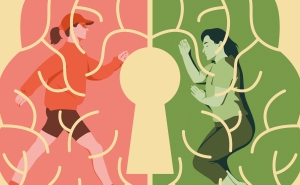
Activity, Sleep & Dementia

Rev. Pamula Yerby-Hammack Breaking the Stigma of Mental Health

Inside the Movement to Transform Mental Health in Sierra Leone

Theatre Nurses: The Unsung Heroes in Surgical Safety

The Push to Get Kenyan Cult Leaders to Embrace Modern Medicine
Essays on the Effects of Medical Marijuana Laws
- Smart, Rosanna
- Advisor(s): Lleras-Muney, Adriana
Over half of the US states have adopted "medical marijuana" laws (MMLs), and 58% of Americans now favor marijuana legalization. Despite public support, federal law continues to prohibit the use and sale of marijuana due to public health concerns of increased dependence and abuse, youth access, and drugged driving. These essays contribute toward understanding the likely health consequences of marijuana liberalization using evidence from MMLs.
Chapter 1 -- Growing Like Weed: Explaining Variation in Medical Marijuana Market Size provides a comprehensive analysis of the determinants of growth in legal medical marijuana markets. Newly collected data on medical marijuana patient registration rates shows that there is substantial heterogeneity in medical marijuana participation over time and across states. This variation is primarily driven by the combined effects of federal enforcement policy and state supply restrictions on legal production costs. Chapter 2 -- The Kids Aren't Alright: Effects of Medical Marijuana Market Growth on Marijuana Use then studies the effect of growth in legal medical marijuana markets on recreational use. Findings show that expansion of legal medical marijuana market size significantly increases the prevalence of recreational cannabis use by both adults and adolescents. Reaching the median state's legal market size would increase the prevalence of marijuana use in the past month by 6% for adolescents aged 12-17, by 9% for 18-25 year-olds, and by 18% for adults over age 25.
The welfare implications of these changes largely depend on the externalities and internalities associated with marijuana use. To study this, Chapter 3 -- On the Health Consequences of Increased Medical Marijuana Access examines the effects of increased marijuana availability on traffic fatalities and mortality related to opioid and alcohol poisonings. In the aggregate, greater medical marijuana access decreases mortality from these causes. However, the aggregate effect masks an important welfare trade-off generated by age differences in the elasticity of substitution between marijuana and alcohol. For adults aged 45-64, greater marijuana availability reduces mortality related to alcohol and opioid poisonings by 7-11% and 12-16% respectively. In contrast, for youths aged 15-20, marijuana access generates negative externalities in the form of a 6% increase in traffic fatalities, with large and significant effects on alcohol- and cannabis-related accidents.
Enter the password to open this PDF file:

An official website of the United States government
Here’s how you know
Official websites use .gov A .gov website belongs to an official government organization in the United States.
Secure .gov websites use HTTPS A lock ( Lock Locked padlock icon ) or https:// means you’ve safely connected to the .gov website. Share sensitive information only on official, secure websites.

In Crisis? Call or Text 988
Your browser is not supported
Switch to Chrome, Edge, Firefox or Safari

Know the Risks of Marijuana
Marijuana is the most commonly used illegal substance in the U.S. and its use is growing. Marijuana use among all adult age groups, both sexes, and pregnant women is going up. At the same time, the perception of how harmful marijuana use can be is declining. Increasingly, young people today do not consider marijuana use a risky behavior.
But there are real risks for people who use marijuana, especially youth and young adults, and women who are pregnant or nursing. Today’s marijuana is stronger than ever before. People can and do become addicted to marijuana.
Approximately 1 in 10 people who use marijuana will become addicted. When they start before age 18, the rate of addiction rises to 1 in 6.

Marijuana Risks
Marijuana use can have negative and long-term effects:
Marijuana and Pregnancy

Marijuana use during pregnancy can be harmful to a baby’s health and cause many serious problems.
What is Your Marijuana IQ?

How much do you really want to know about the risks of marijuana? You might be surprised.
Marijuana Addiction
Contrary to popular belief, marijuana is addictive. Research shows that:
- 1-in-6 people who start using the drug before the age of 18 can become addicted.
- 1-in-10 adults who use the drug can become addicted.
Over the past few decades, the amount of THC in marijuana has steadily climbed; today's marijuana has three times the concentration of THC compared to 25 years ago. The higher the THC amount, the stronger the effects on the brain—likely contributing to increased rates of marijuana-related emergency room visits. While there is no research yet on how higher potency affects the long-term risks of marijuana use, more THC is likely to lead to higher rates of dependency and addiction.
About Marijuana
Marijuana refers to the dried leaves, flowers, stems, and seeds from the Cannabis sativa or Cannabis indica plant. Marijuana is a psychoactive drug that contains close to 500 chemicals, including THC, a mind-altering compound that causes harmful health effects.
People smoke marijuana in hand-rolled cigarettes, in pipes or water pipes, in blunts, and by using vaporizers that pull THC from the marijuana. Marijuana can also be mixed in food (edibles), such as brownies, cookies, and candy, or brewed as a tea. People also smoke or eat different forms of marijuana extracts, which deliver a large amount of THC and can be potentially more dangerous.
Rise of Marijuana Use
Today, marijuana use is on the rise among all adult age groups, both sexes, and pregnant women. People ages 18-25 have the highest rate of use.
Marijuana and THC remain illegal at the federal level, even though many states have legalized its use. In states where legal, marijuana is a fast-growing industry with sales to individuals over 21 in retail stores, wineries, breweries, coffee shops, dispensaries, online, as well as grown at home.
Get the Files
» View and share the following marijuana videos and resources

Video: Marijuana Use while Pregnant or Breastfeeding

Video: Virtual Assistant

7 Ways Marijuana Can Affect Your Brain Health (PDF | 901 KB)

Video: Build a Brain
If you, or someone you know, need help to stop using substances – whether the problem is methamphetamine, alcohol or another drug – call SAMHSA’s National Helpline at 1-800-662-HELP (4357) or TTY: 1-800-487-4889 , or text your zip code to 435748 (HELP4U), or use the SAMHSA’s Behavioral Health Treatment Services Locator to get help.
References and Relevant Resources
- Find Treatment
- Technology Transfer Centers (TTC) Program marijuana resources
- Tips for Teens: Marijuana
- Changes in Cannabis Potency over the Last Two Decades (1995-2014) - Analysis of Current Data in the United States: National Center for Biotechnology Information
- Does Marijuana Use Affect Driving? | NIDA
- Drug Facts: Marijuana | NIDA
- Drug Facts: Marijuana | United States Drug Enforcement Administration
- Early-Onset, Regular Cannabis Use Is Linked to IQ Decline | NIDA
- Is Marijuana Addictive? | NIDA
- National Survey on Drug Use and Health | SAMHSA
- Marijuana and Public Health | Centers for Disease Control and Prevention
- Marijuana: Facts for Teens | NIDA
- Marijuana: Is there a Link Between Marijuana Use and Psychiatric Disorders? | NIDA
- The Contribution of Cannabis Use to Variation in the Incidence of Psychotic Disorder Across Europe | The Lancet
Last Updated: 02/27/2023
2018 Theses Doctoral
Essays on Cannabis Legalization
Thomas, Danna Kang
Though the drug remains illegal at the federal level, in recent years states and localities have increasingly liberalized their marijuana laws in order to generate tax revenue and save resources on marijuana law enforcement. Many states have adopted some form of medical marijuana and/or marijuana decriminalization laws, and as of 2017, Washington, Colorado, Maine, California, Oregon, Massachusetts, Nevada, Alaska, and the District of Columbia have all legalized marijuana for recreational use. In 2016 recreational marijuana generated over $1.8 billion in sales. Hence, studying marijuana reforms and the policies and outcomes of early recreational marijuana adopters is an important area of research. However, perhaps due to the fact that legalized recreational cannabis is a recent phenomenon, a scarcity of research exists on the impacts of recreational cannabis legalization and the efficacy and efficiency of cannabis regulation. This dissertation aims to fill this gap, using the Washington recreational marijuana market as the primary setting to study cannabis legalization in the United States. Of first order importance in the regulation of sin goods such as cannabis is quantifying the value of the marginal damages of negative externalities. Hence, Chapter 1 (co-authored with Lin Tian) explores the impact of marijuana dispensary location on neighborhood property values, exploiting plausibly exogenous variation in marijuana retailer location. Policymakers and advocates have long expressed concerns that the positive effects of the legalization--e.g., increases in tax revenue--are well spread spatially, but the negative effects are highly localized through channels such as crime. Hence, we use changes in property values to measure individuals' willingness to pay to avoid localized externalities caused by the arrival of marijuana dispensaries. Our key identification strategy is to compare changes in housing sales around winners and losers in a lottery for recreational marijuana retail licenses. (Due to location restrictions, license applicants were required to provide an address of where they would like to locate.) Hence, we have the locations of both actual entrants and potential entrants, which provides a natural difference-in-differences set-up. Using data from King County, Washington, we find an almost 2.4% decrease in the value of properties within a 0.5 mile radius of an entrant, a $9,400 decline in median property values. The aforementioned retail license lottery was used to distribute licenses due to a license quota. Retail license quotas are often used by states to regulate entry into sin goods markets as quotas can restrict consumption by decreasing access and by reducing competition (and, therefore, increasing markups). However, license quotas also create allocative inefficiency. For example, license quotas are often based on the population of a city or county. Hence, licenses are not necessarily allocated to the areas where they offer the highest marginal benefit. Moreover, as seen in the case of the Washington recreational marijuana market, licenses are often distributed via lottery, meaning that in the absence of an efficiency secondary market for licenses, the license recipients are not necessarily the most efficient potential entrants. This allocative inefficiency is generated by heterogeneity in firms and consumers. Therefore, in Chapter 2, I develop a model of demand and firm pricing in order to investigate firm-level heterogeneity and inefficiency. Demand is differentiated by geography and incorporates consumer demographics. I estimate this demand model using data on firm sales from Washington. Utilizing the estimates and firm pricing model, I back out a non-parametric distribution of firm variable costs. These variable costs differ by product and firm and provide a measure of firm inefficiency. I find that variable costs have lower inventory turnover; hence, randomly choosing entrants in a lottery could be a large contributor to allocative inefficiency. Chapter 3 explores the sources of allocative inefficiency in license distribution in the Washington recreational marijuana market. A difficulty in studying the welfare effects of license quotas is finding credible counterfactuals of unrestricted entry. Therefore, I take a structural approach: I first develop a three stage model that endogenizes firm entry and incorporates the spatial demand and pricing model discussed in Chapter 2. Using the estimates of the demand and pricing model, I estimate firms' fixed costs and use data on locations of those potential entrants that did not win Washington's retail license lottery to simulate counterfactual entry patterns. I find that allowing firms to enter freely at Washington's current marijuana tax rate increases total surplus by 21.5% relative to a baseline simulation of Washington's license quota regime. Geographic misallocation and random allocation of licenses account for 6.6\% and 65.9\% of this difference, respectively. Moreover, as the primary objective of these quotas is to mitigate the negative externalities of marijuana consumption, I study alternative state tax policies that directly control for the marginal damages of marijuana consumption. Free entry with tax rates that keep the quantity of marijuana or THC consumed equal to baseline consumption increases welfare by 6.9% and 11.7%, respectively. I also explore the possibility of heterogeneous marginal damages of consumption across geography, backing out the non-uniform sales tax across geography that is consistent with Washington's license quota policy. Free entry with a non-uniform sales tax increases efficiency by over 7% relative to the baseline simulation of license quotas due to improvements in license allocation.
- Cannabis--Law and legislation
- Marijuana industry
- Drug legalization
- Drugs--Economic aspects

More About This Work
- DOI Copy DOI to clipboard
- Share full article
Advertisement
Supported by
The U.S. Is Easing Marijuana Restrictions. Here’s How It Works.
A new federal rule would reclassify marijuana as a less-dangerous, Schedule III drug. It’s a significant shift, even as it does not legalize the drug.

By Eileen Sullivan
Reporting from Washington
The Biden administration moved on Thursday to downgrade marijuana from the most restrictive category of drugs.
The proposed rule, submitted to the Federal Register, is subject to a 60-day comment period, kicking off a lengthy approval process before it takes effect.
The proposal, which would move marijuana to Schedule III, from Schedule I, signals a significant shift in how the federal government views the substance, even as it does not legalize the drug. Its classification as one of the most dangerous and habit-forming substances has long drawn criticism, and recategorizing the drug is an acknowledgment by the federal government that the drug has some medicinal value and lower potential for abuse.
The categories of controlled substances determine production amounts, access, research and legal consequences. Some experts have argued that cigarettes and alcohol, which are not in any of the five categories of controlled substances, should be included in Schedule I because of their demonstrated high risk of abuse and addiction.
In a recorded video, President Biden praised the step, describing it as “monumental.”
“Far too many lives have been upended because of a failed approach to marijuana, and I’m committed to righting those wrongs,” Mr. Biden said. “You have my word on it.”
Here is a look at the five categories, or schedules, including some of the drugs in each designation. Opioids fall into all five schedules, depending on the exact drug.
The federal government classifies these drugs as having no currently accepted medical use. It also says these drugs pose a high risk for abuse. Marijuana has been in this category, along with drugs like heroin, L.S.D., ecstasy and magic mushrooms.
Schedule II
The government says substances in this category have some medical value, even as they pose a high risk for abuse. This includes cocaine, methamphetamine, painkillers like Vicodin, OxyContin and fentanyl; and Dexedrine, Adderall and Ritalin, which are most commonly prescribed to treat attention deficit hyperactivity disorder.
Lawmakers on Capitol Hill have sought to push fentanyl into a more stringent classification given that it has become a leading cause of death in the country. But doing so would have a detrimental impact on surgery patients because fentanyl is one of the best anesthetics, said Keith Humphreys, a drug policy expert at Stanford University. It also would not address the illegal production of fentanyl, which is what is fueling the overwhelming number of fentanyl-related deaths.
Schedule III
These drugs are considered to have a low to moderate risk of abuse, such as Tylenol with codeine, ketamine, anabolic steroids, testosterone and, eventually, marijuana. Drugs in this category are not subject to the federal income tax rule that has hampered producers in states where marijuana is legal. By law , producers of drugs in the top two categories cannot take tax exemptions for their business expenses like rent, employee salaries and utility bills that support operations.
Until 2014, hydrocodone combination products, most often prescribed as a painkiller — such as Vicodin — was considered a Schedule III drug. But the Drug Enforcement Administration changed that to try to curb the prescription drug abuse that had been sweeping the country at the time.
Schedule IV
Drugs in this group are considered to have a low risk of abuse and addiction and require a prescription. They include anti-anxiety medicine like Xanax and Valium; muscle relaxants; and low-grade pain killers like Tramadol. The sleeping drug Ambien is also in this category.
These are considered the lowest-risk drugs and still require a prescription. Examples include certain cough medicine, drugs to treat diarrhea, such as Lomotil, Motofen and Parepectolin, and the anti-epileptic drug, Lyrica.
Eileen Sullivan covers breaking news, the Justice Department, the trials against Donald J. Trump and the Biden administration. More about Eileen Sullivan
Inside the Biden Administration
Here’s the latest news and analysis from washington..
War in Ukraine: President Biden barred Ukraine from firing U.S. weapons into Russia to “avoid World War III.” After a sobering trip to Kyiv, Secretary of State Antony Blinken wants to ease that rule .
Live Nation: The Justice Department is suing Live Nation Entertainment , the owner of Ticketmaster, asking a court to break up the company over claims it illegally maintained a monopoly in the live entertainment industry.
Relations With Kenya: During the Kenyan president’s state visit , Biden will designate the East African nation as a “major non-NATO ally.”
Hidden Fees: Biden’s effort to crack down on “junk fees” from airlines and credit-card companies is doubling as a war against inflation.
Student Loans: Biden announced the cancellation of another $7.7 billion in student loans , building on his strategy of chipping away at college debt by tweaking existing programs.
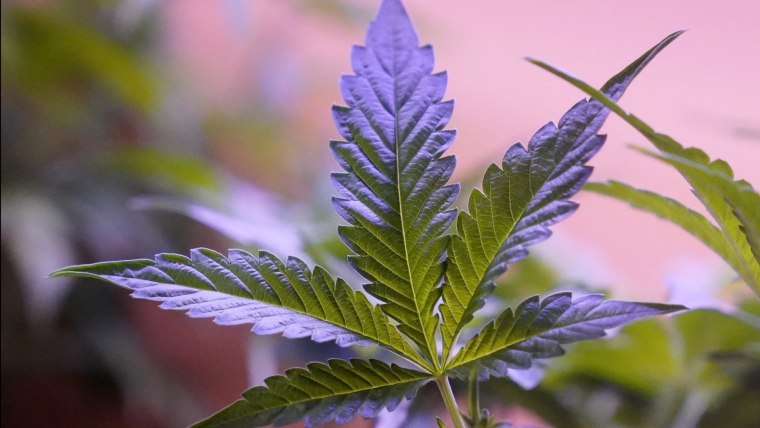
Study finds teens who use marijuana are more likely to suffer from psychotic disorders

Biden Administration takes steps to reclassify marijuana as lower-risk
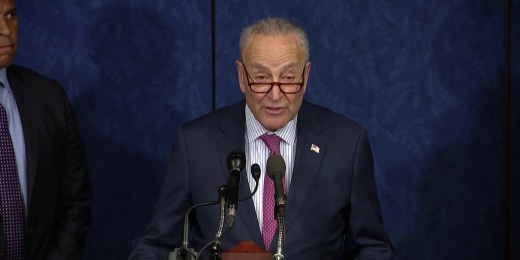
Schumer: Reclassifying marijuana is 'long overdue'
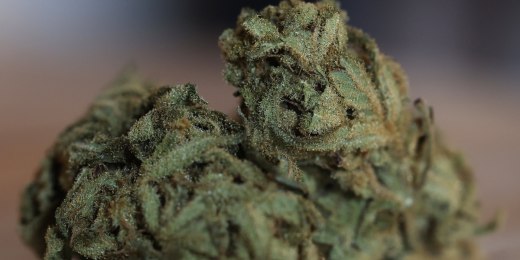
Potential negative effects of easing marijuana restrictions
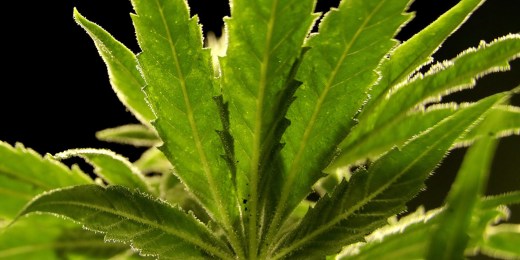
Biden plans to reclassify marijuana, ease restrictions nationwide
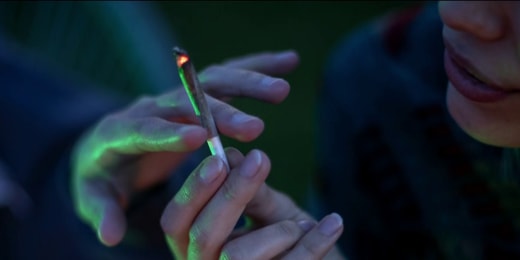
Biden administration plans to reclassify and ease restrictions on marijuana
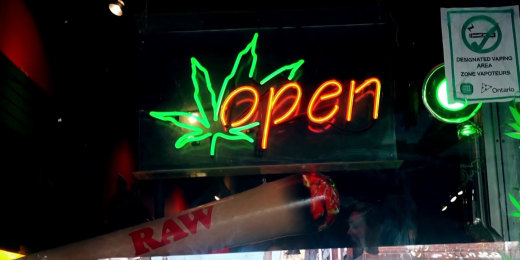
Stronger marijuana linked to more psychosis in teens
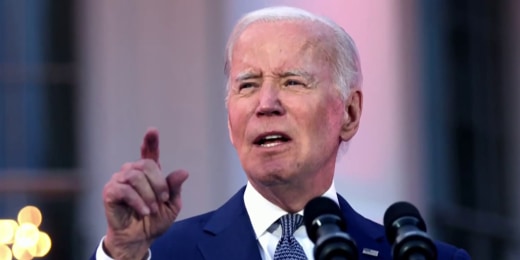
Biden to issue pardons for certain marijuana offenses

High seas: Cruise lines crack down on passengers' cannabis use
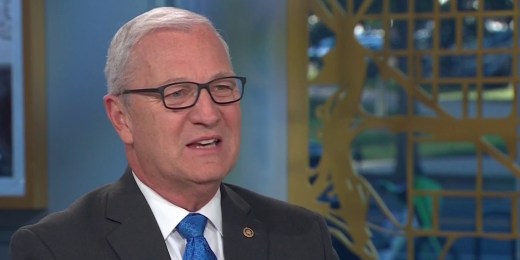
Full Cramer: Marijuana banking bill would put ‘parameters around the industry’
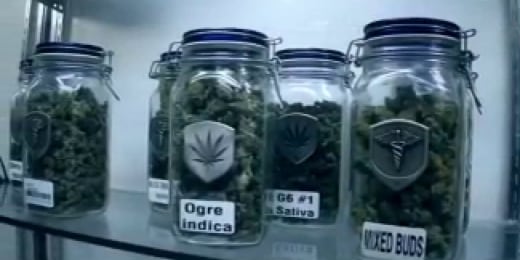
Republicans soften on federal marijuana reform in a shift that could make it a reality
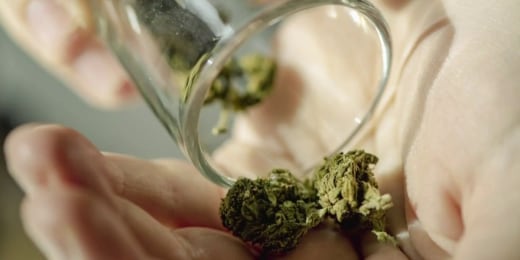
HHS recommends easing federal restrictions on marijuana

Experimental drug shows promise for marijuana addiction

Fitness enthusiasts incorporate cannabis into workouts
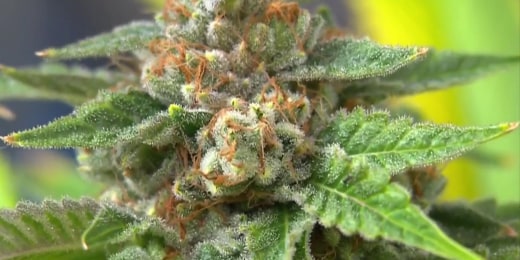
Lawmakers to address cannabis reform on 4/20
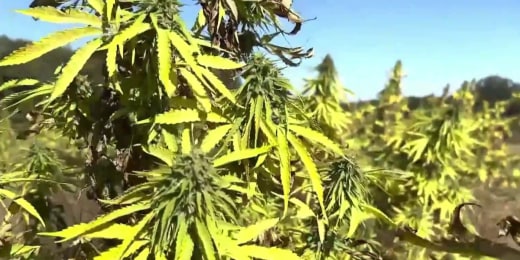
New York approves first licenses to sell legal marijuana
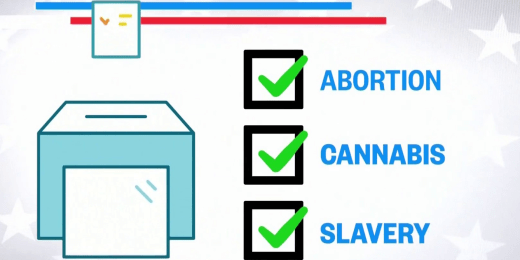
Abortion, slavery and marijuana legalization among top ballot measure issues

Virginia mom charged with murder after toddler's THC overdose

New York entrepreneur and daughters making mark in male-dominated medical marijuana industry
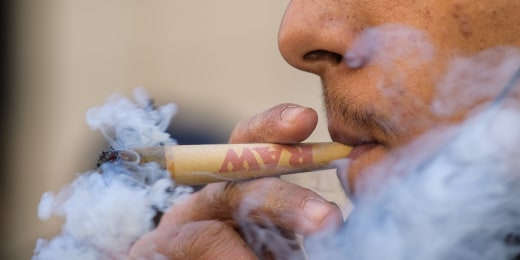
Biden pardons thousands convicted of marijuana possession
Nbc news now.
Data from a new study is showing more links between teen marijuana use and an increased risk of mental health disorders. NBC News’ medical contributor Dr. Vin Gupta explains the study’s findings and the effects of higher amounts of THC in marijuana. May 23, 2024
Best of NBC News

NBC News Channel
American reunited with family after escaping jail sentence in turks and caicos.

Video shows Florida officer rescue people trapped in burning car

Biden administration concerned over Russia-North Korea alliance

Remains of Indiana man missing since 1993 identified

Sean Kingston arrested after his Florida home was raided

French president delays voting reform amid deadly unrest
Find cars that meet your safety needs with AARP Auto Buying Program powered by TrueCar. Learn more.
AARP daily Crossword Puzzle
Hotels with AARP discounts
Life Insurance
AARP Dental Insurance Plans
AARP MEMBERSHIP — Limited Time Offer-Memorial Day Sale
Join AARP for just $9 per year with a 5-year membership. Join now and get a FREE Gift! Get instant access to members-only products and hundreds of discounts, a free second membership, and a subscription to AARP the Magazine.
- right_container
Work & Jobs
Social Security
AARP en Español
- Membership & Benefits
AARP Rewards
- AARP Rewards %{points}%
Conditions & Treatments
Drugs & Supplements
Health Care & Coverage
Health Benefits

Staying Fit
Your Personalized Guide to Fitness

AARP Hearing Center
Ways To Improve Your Hearing

Brain Health Resources
Tools and Explainers on Brain Health

A Retreat For Those Struggling
Scams & Fraud
Personal Finance
Money Benefits

View and Report Scams in Your Area

AARP Foundation Tax-Aide
Free Tax Preparation Assistance

AARP Money Map
Get Your Finances Back on Track

How to Protect What You Collect
Small Business
Age Discrimination

Flexible Work
Freelance Jobs You Can Do From Home

AARP Skills Builder
Online Courses to Boost Your Career

31 Great Ways to Boost Your Career

ON-DEMAND WEBINARS
Tips to Enhance Your Job Search

Get More out of Your Benefits

When to Start Taking Social Security

10 Top Social Security FAQs

Social Security Benefits Calculator

Medicare Made Easy
Original vs. Medicare Advantage

Enrollment Guide
Step-by-Step Tool for First-Timers

Prescription Drugs
9 Biggest Changes Under New Rx Law

Medicare FAQs
Quick Answers to Your Top Questions
Care at Home
Financial & Legal
Life Balance

LONG-TERM CARE
Understanding Basics of LTC Insurance

State Guides
Assistance and Services in Your Area

Prepare to Care Guides
How to Develop a Caregiving Plan

End of Life
How to Cope With Grief, Loss
Recently Played
Word & Trivia
Atari® & Retro
Members Only
Staying Sharp
Mobile Apps
More About Games

Right Again! Trivia

Right Again! Trivia – Sports

Atari® Video Games

Throwback Thursday Crossword
Travel Tips
Vacation Ideas
Destinations
Travel Benefits

Outdoor Vacation Ideas
Camping Vacations

Plan Ahead for Summer Travel

AARP National Park Guide
Discover Canyonlands National Park

25 Ways to Save on Your Vacation
Entertainment & Style
Family & Relationships
Personal Tech
Home & Living
Celebrities
Beauty & Style

TV for Grownups
Best Reality TV Shows for Grownups

Robert De Niro Reflects on His Life

Looking Back
50 World Changers Turning 50

Sex & Dating
Spice Up Your Love Life

Navigate All Kinds of Connections

Life & Home
Couple Creates Their Forever Home

Home Technology
Caregiver’s Guide to Smart Home Tech

AI Technology
The Possibilities, Perils of AI

Virtual Community Center
Join Free Tech Help Events

Create a Hygge Haven

Soups to Comfort Your Soul

Your Ultimate Guide to Mulching
Driver Safety
Maintenance & Safety
Trends & Technology

AARP Smart Guide
How to Keep Your Car Running

We Need To Talk
Assess Your Loved One's Driving Skills

AARP Smart Driver Course

Building Resilience in Difficult Times

Tips for Finding Your Calm

Weight Loss After 50 Challenge

Cautionary Tales of Today's Biggest Scams

7 Top Podcasts for Armchair Travelers

Jean Chatzky: ‘Closing the Savings Gap’

Quick Digest of Today's Top News

AARP Top Tips for Navigating Life

Get Moving With Our Workout Series
You are now leaving AARP.org and going to a website that is not operated by AARP. A different privacy policy and terms of service will apply.
Go to Series Main Page
Can Marijuana Send You to the ER?
Research finds increase in emergency room visits linked to cannabis poisoning among older adults.
Peter Urban,

Older marijuana users are ending up in emergency rooms at higher rates since legal cannabis products — and in particular, edible cannabis products, like gummies — have become more broadly available, according to new research out of Canada.
The findings, published May 20 in JAMA Internal Medicine , align with trends in the U.S., where edible cannabis is also behind an increasing proportion of cannabis poisonings in older adults.

AARP Membership — $12 for your first year when you sign up for Automatic Renewal
Get instant access to members-only products and hundreds of discounts, a free second membership, and a subscription to AARP the Magazine.
According to the latest study, the rate of emergency room visits for adults 65 and older in Canada rose from a pre-legalization rate of 5.8 per 100,000 to 21.1 per 100,000 after edibles were available for retail in January 2020. In total, there were 2,322 ER visits across Canada from 2015 through 2022, according to the researchers.
Adverse effects of cannabis use can include dry mouth, impaired motor skills, panic, paranoia and decreased short-term memory, according to the National Institutes of Health.
Cannabis gaining popularity among older U.S. adults
About 12 percent of U.S. adults ages 50 to 80 used cannabis products in the past year — a share that has grown considerably in the last several years , according to 2023 research from the University of Michigan’s National Poll on Healthy Aging, supported by AARP. Cannabis use among U.S. adults 65 and older was at 0.4 percent in 2006 and 2007, before increasing to 2.9 percent in 2015 and 2016 , according to research published in JAMA Internal Medicine .

AARP NEWSLETTERS

%{ newsLetterPromoText }%
%{ description }%
Privacy Policy
ARTICLE CONTINUES AFTER ADVERTISEMENT
What’s behind more ER visits?
While they cannot say for certain, the authors of the Canadian study say older adults “are at particularly high risk of adverse effects from cannabis due to age-related physiological changes, polypharmacy [taking multiple medications], drug interactions, and multimorbidity,” or having two or more chronic health conditions. They note that the users may also not be getting age-specific dosing instructions.
AARP® Vision Plans from VSP™
Exclusive vision insurance plans designed for members and their families
In an accompanying editorial, geriatricians Lona Mody, M.D., a professor at the University of Michigan, and Sharon K. Inouye, M.D., a professor at Harvard Medical School, suggest older adults may not understand the potency of today’s cannabis products. “Current cannabis is much more potent than in the past. With edible cannabis products, it is difficult to know what is being ingested by patients because active ingredients and doses are not specified,” they write.
Mody and Inouye, who were not part of the research, also note that edibles can be difficult to distinguish from foods that don’t contain cannabis, raising the risk for accidental overconsumption. What's more, older adults using cannabis products may not be consulting their physicians to understand any potential side effects — particularly in combination with other medications they may be taking.
“This study provides a cautionary tale of legalization of substances without adequate research, education, and counseling of users regarding adverse effects and safe usage, particularly in older adults,” Mody and Inouye write. “In addition, instructing older adults to inform and seek advice from their physicians may improve both the effectiveness and safety of use. Likewise, physicians should directly ask their patients about nonmedical cannabis use.”
Peter Urban is a contributing writer and editor who focuses on health news. Urban spent two decades working as a correspondent in Washington, D.C., including a stint as Washington bureau chief for the Las Vegas Review-Journal , and for daily newspapers in Connecticut, Massachusetts, Ohio, California and Arkansas, His freelance work has appeared in Scientific American, Bloomberg Government and CTNewsJunkie.com.
Discover AARP Members Only Access
Already a Member? Login

More on Health
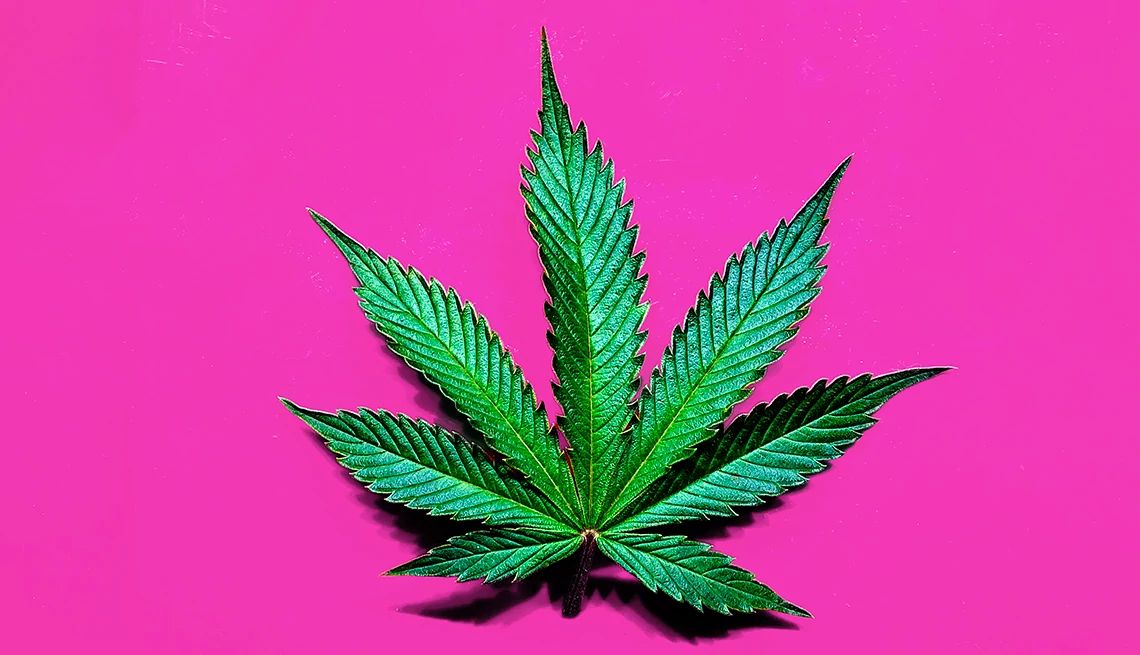
Cannabis and Heart Risks

Does CBD Oil Help With Joint Pain?

19 Heart-Smart Choices to Make Throughout Your Day
Treat your heart right morning, noon and night with these easy, research-proven, expert-endorsed ideas
Recommended for You
AARP Value & Member Benefits

Learn, earn and redeem points for rewards with our free loyalty program

AARP® Dental Insurance Plan administered by Delta Dental Insurance Company
Dental insurance plans for members and their families

The National Hearing Test
Members can take a free hearing test by phone

AARP® Staying Sharp®
Activities, recipes, challenges and more with full access to AARP Staying Sharp®
SAVE MONEY WITH THESE LIMITED-TIME OFFERS
Neal Milner: How Both Sides In Marijuana Debate Blew Smoke Up Our Okole
It's one thing to have passionate convictions, quite another to have cold, hard facts.
By Neal Milner
May 23, 2024 · 6 min read

About the Author

Neal Milner
It’s one thing to have passionate convictions, quite another to have cold, hard facts.
Last session, the Hawaii Legislature decided not to legalize recreational marijuana. Here are five important facts to keep in mind.

First, research assessing the effects of legalization is, to put it politely, inconclusive, and, to put it more frankly, close to totally useless.
Second, at best the research shows that the consequences are nowhere near what either advocates or opponents claim.
Third, nevertheless, in recent Hawaii legislative testimony about legalization, the advocates on both sides acted as if the research supporting their positions was gold standard.
Fourth, that’s more than just bad marijuana policymaking. It’s an all-too-common way that beliefs and mythologies get bandied about and suddenly get transformed into unadorned “real” facts that then influence legislation. Legislative alchemy, turning fluff to gold.
Fifth, there are ways to be more careful and less demagogic about evidence. We’ll look at what the RAND Corporation, the gold standard of policy assessing, suggests.
Inconclusive Evidence
The research tells us almost nothing definitive about the effects of legalizing marijuana.
The only impact that shows up consistently is that states that legalize recreational marijuana and tax it increase their revenues. The more you tax, the more revenue you get. Duh.
It’s a slippery, twisty downhill slope after that.
Everything else, and I mean everything, is inconsistent and murky, typically based on small-scale studies, many of which contradict one another. You name it. Crime rates, mental problems, drug use, classroom performance, auto accidents, right down the line. Inconclusive.
Don’t take my word for it. Check out these large-scale , meta-analyses of all these studies . As one of these studies understatedly put it, this evidence is far from the claims made by either legalization advocates or its opponents.
Does the lack of consistent findings lead to careful claims and modest proposals? Well, no.

The anti campaign led by Oahu prosecutor Steve Alm was so public, well-organized and effective that it deserves special attention.
Alm’s efforts began well before this year’s Legislature took up the issue. Among other activities, he organized large public forums where a number of people both from Hawaii and elsewhere presented their anti-marijuana case.
I went to one at a Waikiki hotel. It was far from a pep rally against reefer madness. A lot of smart people presented their case and invited discussion. All the cases, of course, were anti-legalization.
In my old life, I also went to many conferences where researchers presented their findings.
Big difference from the Alm meetings. At my former-life conferences, there were commentators for every presentation. Their job was to carefully examine the data, try to clarify the findings and methods, and if necessary, to challenge them. Dispassion, examining from a distance, objectivity, purposeful doubt.
The Alm forum was certainly not meant to be objective. It was to sell an idea. There is nothing wrong with that, of course. It is flawed, though, to believe the evidence is right on, solid as a rock and definitive, which is the position Alm and his supporters took in their testimony.
Here is a summary of Alm’s testimony : Legalization will increase the black market; more children will get access to marijuana, and there are no effective ways to keep this from happening; marijuana harms the brain; there will be more auto fatalities, more hospital admissions; bad economic impacts.
All presented as irrevocable facts.
And here is a summary of a pro-legalization advocate . It has the same drawbacks:
“The legalization of cannabis has been synonymous with the following community benefits: economic boosts, criminal justice reform, consumer safety, entrepreneurship opportunities, tax revenue allocation, reduced crime rates as supported by the FBI’s Uniform Crime Report showing that there is no compelling basis for claims that legalizing marijuana and establishing regulated markets undermines public safety as well as a tourism boost.”
There is some truth to all of these claims in the sense that some study somewhere has shown this. But, as the research indicates, other studies have not.

A Bigger Problem and a Better Way
OK, I am not grading graduate seminar papers here. We have to be realistic about the kinds of information the Legislature has at its disposal. As the RAND Corporation says in its report assessing the effect of gun control laws — which, by the way prove to be inconclusive for the same reasons as the marijuana legislation — legislators often have to act without having this kind of information available.
Something comes up, especially a crisis, and it’s necessary to act more or less by the seat of their pants.
Still, it’s too tempting to make laws supported by inconclusive facts about how the laws might work because that’s what you believe in your heart.
It is too easy to fall into a trap that Honolulu Mayor Rick Blangiaridi candidly described regarding his anti-marijuana testimony:
“I certainly know what I believe in,” he said about his opposition to legalization , “and I certainly know the strength of my convictions. This is not good.”
A shared set of facts, non-partisan and impartial — wow, what a heavy lift.
Of course, it is good to have the courage of your convictions. If you are making laws, however, it’s even better to have convictions supported by evidence. And sometimes convictions blind a person to the evidence. Dispassion and the ability to be skeptical about your convictions, that’s also a part of good governing.
The RAND Corp.’s mission can be a guide to better policymaking: “By highlighting where scientific evidence is accumulating,” the mission statement says, “we hope to build consensus around a shared set of facts that have been established through a transparent, nonpartisan and impartial review process.”
A shared set of facts, non-partisan and impartial — wow, what a heavy lift. Those objectives lie somewhere between an aspiration and a pipedream.
Still, it’s a set of instructions that’s too valuable to dismiss.
If nothing else, RAND reminds us that policymaking is not just about passionate advocacy. It is far better to have the facts on your side than to rely on the courage of your conviction.
Making policy needs to include a sophisticated, rigorous and skeptical examination of the evidence on all sides and a strong dose of modest self-awareness of the policymaker’s own biases.
Overselling limited evidence. Generating more heat than light. Overall grade for the quality of the marijuana testimony is D-. And that’s a terrible way to run a railroad.
Wait! That is the way we run a railroad here in Honolulu.
--> Sign up for our FREE morning newsletter and face each day more informed. --> Sign up for our FREE morning newsletter and face each day more informed.
Local reporting when you need it most.
Support timely, accurate, independent journalism.
Honolulu Civil Beat is a nonprofit organization, and your donation helps us produce local reporting that serves all of Hawaii.
Neal Milner is a former political science professor at the University of Hawaii where he taught for 40 years. He is a political analyst for KITV and is a regular contributor to Hawaii Public Radio's "The Conversation." His most recent book is The Gift of Underpants. Opinions are the author's own and do not necessarily reflect Civil Beat's views.
Latest Comments (0)
Here are my first three highlights I'd link to this article. First, search "about cato" and "cato heroin" to confirm this. Second, go to page 30 and look at the double digit percents of the benefits. Third, look at the issue date of the two metastudies, this one is relevant. Reading and following the instructions will lead you to the same conclusion I did.Thank you for convincing me on Mr Alm, shame on him for the shady practices.
Alan8kuchinashi · 22 hours ago
I'll be voting for anyone to replace Alm. Will you?
Da329Guys · 23 hours ago
Good message, but I still see flaws with the claims made here.The first linked "metastudy" is written by Cato Institute, which is a political thinktank that advocates for legalizing all drugs (look up "about cato", "cato legalize drugs", "cato legalize heroin"). They have an agenda so I wouldn't trust it.The second metastudy's webpage (find via searching "kansascityfed marijuana", can verify via name matching) summarizes its findings. It does note slight economic benefits, but also notes "substance use disorders, chronic homelessness, and arrests increased by 17, 35, and 13 percent, respectively" on average post-legalization. It would've been nice to link to that instead like was done for the third.None of the metastudies address the environmental impacts of weed farms, which have been shown to be negative (massive water usage, production of toxic and greenhouse gas air pollutants). Weed tourism "capitals" Amsterdam and Thailand have also been rolling back.I can't speak for Mr. Alm and his tactics, but, by the hard facts, weed really is bad news. Grift culture is killing the US and I am going to have to live through and probably fight for this mess being created.
Alan8kuchinashi · 1 day ago
About IDEAS
IDEAS is the place you'll find essays, analysis and opinion on every aspect of life and public affairs in Hawaii. We want to showcase smart ideas about the future of Hawaii, from the state's sharpest thinkers, to stretch our collective thinking about a problem or an issue. Email [email protected] to submit an idea.
You're officially signed up for our daily newsletter, the Morning Beat. A confirmation email will arrive shortly.
In the meantime, we have other newsletters that you might enjoy. Check the boxes for emails you'd like to receive.
- Breaking News Alerts What's this? Be the first to hear about important news stories with these occasional emails.
- Special Projects & Investigations What's this? You'll hear from us whenever Civil Beat publishes a major project or investigation.
- Environment What's this? Get our latest environmental news on a monthly basis, including updates on Nathan Eagle's 'Hawaii 2040' series.
- Ideas What's this? Get occasional emails highlighting essays, analysis and opinion from IDEAS, Civil Beat's commentary section.
Inbox overcrowded? Don't worry, you can unsubscribe or update your preferences at any time.

IMAGES
VIDEO
COMMENTS
Depending on the individual, cannabis can produce different effects. Altered sense of smell, sense or perception is common, as well as an inability to properly understand time. The individual usually feels relaxed, or experiences quick mood changes. In addition, speech impairment, trouble moving and hallucinations can be common symptoms.
Believe me you, marijuana also have a very good positive effect on our health. This part of essay discusses the positive effects of marijuanas. They range from improvements to quality of life to the potential treatment of debilitating diseases. In the short-run, cannabis can provide instant relief from various ailments, such as chronic stress ...
With marijuana use, the most common acute reaction in humans is a decrease in blood pressure resulting from cannabinoid effects on the vasculature and autonomic nervous system. 52 Despite this physiological reaction, limited studies using the National Health and Nutrition Examination Survey showed a modest association of recent cannabis use ...
By comparing identical twins who shared genetics and a home environment, he could better separate the effects of cannabis use on negative outcomes from the effects of these background factors. He did not find evidence that cannabis caused more mental health problems or decreased cognitive ability, but the drug was linked to lower educational ...
You can choose not to drive—and remind your friends and family to do the same—after using cannabis. It can slow reaction time and ability to make decisions. 7 16. Cannabis can impair coordination and distort perception. 7 16. The use of multiple substances (such as cannabis and alcohol) at the same time can increase impairment. 17.
Adverse effects were reported in most reviews comparing cannabis with placebo (49/59, 83%) and in 20/24 (83%) of the reviews comparing cannabis to active drugs. Minor adverse effects (e.g., drowsiness, dizziness) were common and reported in over half of the reviews. Serious harms were not as common, but were reported in 21/59 (36%) reviews that ...
Research has shown that marijuana's negative effects on attention, memory, and learning can last for days or weeks after the acute effects of the drug wear off, depending on the person's history with the drug. 52 Consequently, someone who smokes marijuana daily may be functioning at a reduced intellectual level most or all of the time. . Considerable evidence suggests that students who ...
"Marijuana" refers to the dried leaves of the Cannabis sativa plant. 1 Internationally, it is the most widely used illicit substance. 2 About 2.5% of the world's population uses marijuana, and it accounts for half of all drug seizures worldwide. 2, 3 In Canada, the rate of past-month marijuana use is about 10.5%. 2 Users report feelings of excitement, euphoria, sensory distortion ...
The Bad. In addition to minor side effects that many users joke about—such as short-term memory loss—recent studies have linked marijuana to adverse health outcomes involving the lungs, heart ...
Effective Use of Handouts and is on Time. Figure 1. The negative effects of marijuana on the brain (Weber, 2016). Figure 2. THC acts on numerous areas in the brain (in yellow) ("THC acts on numerous areas in the brain (in yellow)," 2018). Figure 3. Addiction treatment model ("Addiction treatment model," n.d.). Figure 4.
Cognition. Adult studies of marijuana use often find subtle decreases in performance compared to controls in cognitive domains such as attention, memory, and processing speed; such effects have been discussed as transient in the literature given limited group differences after prolonged abstinence from marijuana [5, 6].It is unclear if findings translate to adolescent populations.
Imaging studies of marijuana's impact on brain structure in humans have shown conflicting results. Some studies suggest regular marijuana use in adolescence is associated with altered connectivity and reduced volume of specific brain regions involved in a broad range of executive functions such as memory, learning, and impulse control ...
Other common effects, which may vary dramatically among different people, include heightened sensory perception (e.g., brighter colors), laughter, altered perception of time, and increased appetite. If marijuana is consumed in foods or beverages, these effects are somewhat delayed—usually appearing after 30 minutes to 1 hour—because the ...
It is the effect of marijuana on memory which tends to cause the most anxiety, and the concern is scientifically validated. The hippocampus is the region of the brain identified with memory, and a consistently noted result of taking marijuana is memory lapse. "One of the primary effects of marijuana in humans is the disruption of short-term ...
The legalization of marijuana has emerged as a critical public policy issue, with far-reaching implications for health, education, and government programs at both the state and federal levels. The three essays of this dissertation show that medical marijuana legalization (MML) has a negative effect in each of these areas. The first essay shows, that the enactment of MMLs can exacerbate the ...
Marijuana, also known as cannabis, is a psychoactive drug made from a plant and used for recreational and medical purposes. Being fully prohibited in some countries, it is fully legalized in others. In your essay about marijuana, you might want to focus on the pros and cons of its legalization. Another option is to discuss marijuana dependence.
Figure 1. Cannabis Sativa. Cannabis has a variety of mental and physical effects, including euphoria, altered states of mind. and sense of time, difficulty concentrating, impaired short-term ...
Among the outcomes considered are: youth marijuana use, alcohol consumption, the abuse of prescription opioids, traffic fatalities, and crime. For some of these outcomes, there is a near consensus in the literature regarding the effects of medical marijuana laws (MMLs). As an example, leveraging geographic and temporal variation in MMLs ...
We know there are risks for mental health consequences. The evidence is probably the strongest that if you have a family history of psychosis or schizophrenia, using cannabis early in adolescence is not the best idea. We know cannabis can trigger psychotic symptoms and potentially longer lasting problems with psychosis and schizophrenia.
legalization front. During the period 201020- 20, 23 state medical marijuana laws (MMLs) went into effect and 12 state recreational marijuana laws (RMLs) went into effect . According to recent public-opinion polls, two out of three Americans favor the legalization of marijuana (Gurley 2019; Lopez 2019).
Essays on the Effects of Medical Marijuana Laws. Over half of the US states have adopted "medical marijuana" laws (MMLs), and 58% of Americans now favor marijuana legalization. Despite public support, federal law continues to prohibit the use and sale of marijuana due to public health concerns of increased dependence and abuse, youth access ...
Marijuana use can have negative and long-term effects: Brain health: Marijuana can cause permanent IQ loss of as much as 8 points when people start using it at a young age. These IQ points do not come back, even after quitting marijuana. Mental health: Studies link marijuana use to depression, anxiety, suicide planning, and psychotic episodes.
Essays on Cannabis Legalization. Thomas, Danna Kang. Though the drug remains illegal at the federal level, in recent years states and localities have increasingly liberalized their marijuana laws in order to generate tax revenue and save resources on marijuana law enforcement. Many states have adopted some form of medical marijuana and/or ...
It seems sensible to assume that legalizing marijuana would lead to more use by young people. Yes, common sense might argue that as cannabis becomes legalized, it will be more accessible. There ...
On May 16 the Justice Department formally moved to reclassify marijuana from Schedule I of the Controlled Substances Act to Schedule III. This move will not affect the legality of recreational use ...
Marijuana has been in this category, along with drugs like heroin, L.S.D., ecstasy and magic mushrooms. Schedule II The government says substances in this category have some medical value, even as ...
By Akshay Syal, M.D. Teenagers who used cannabis within the last year had a dramatically higher rate of developing a psychotic disorder, according to a study published Wednesday. The study, led by ...
Study finds teens who use marijuana are more likely to suffer from psychotic disorders. Data from a new study is showing more links between teen marijuana use and an increased risk of mental ...
Learn about the importance of age-specific dosing. While they cannot say for certain, the authors of the Canadian study say older adults "are at particularly high risk of adverse effects from cannabis due to age-related physiological changes, polypharmacy [taking multiple medications], drug interactions, and multimorbidity," or having two or more chronic health conditions.
Here is a summary of Alm's testimony: Legalization will increase the black market; more children will get access to marijuana, and there are no effective ways to keep this from happening ...